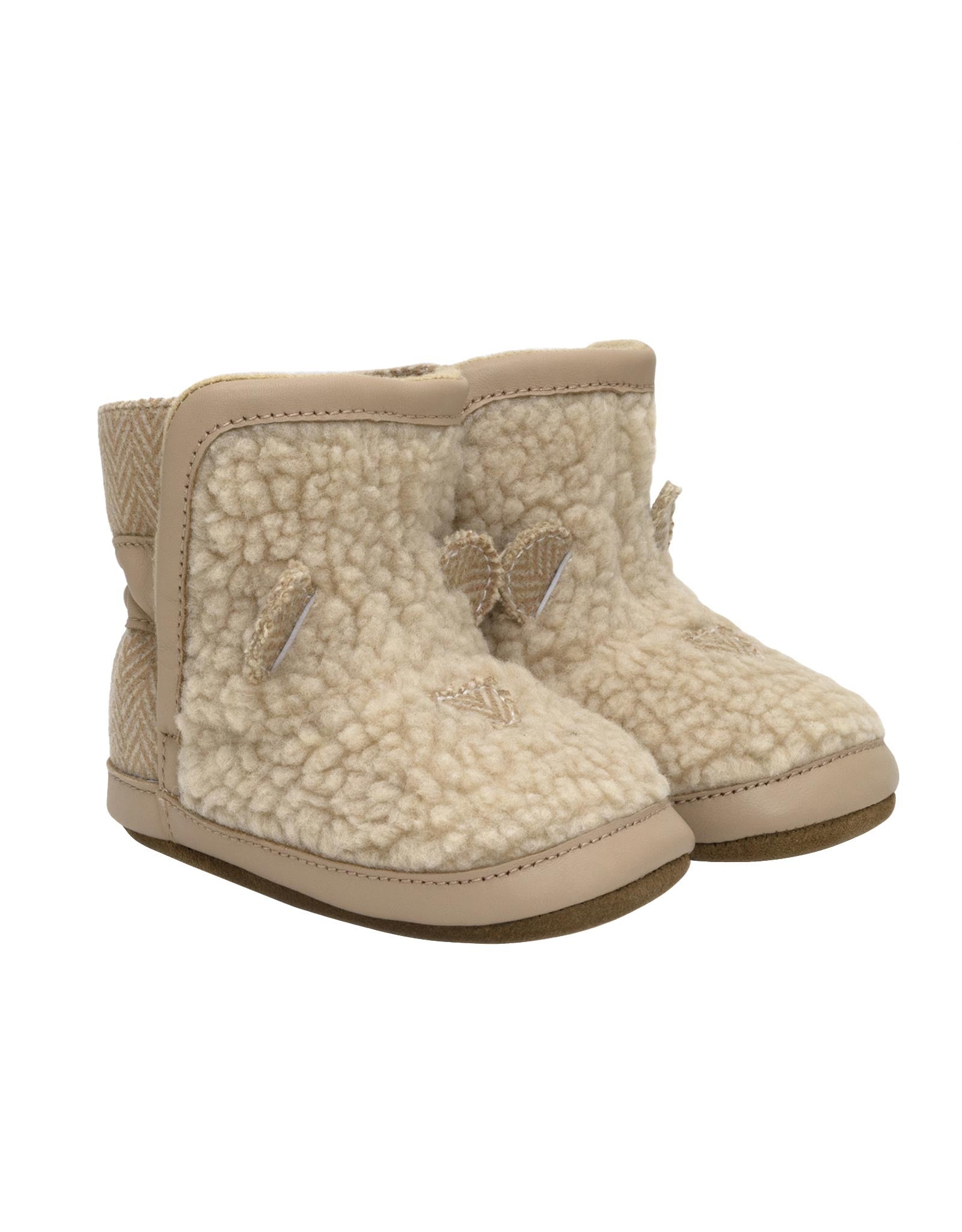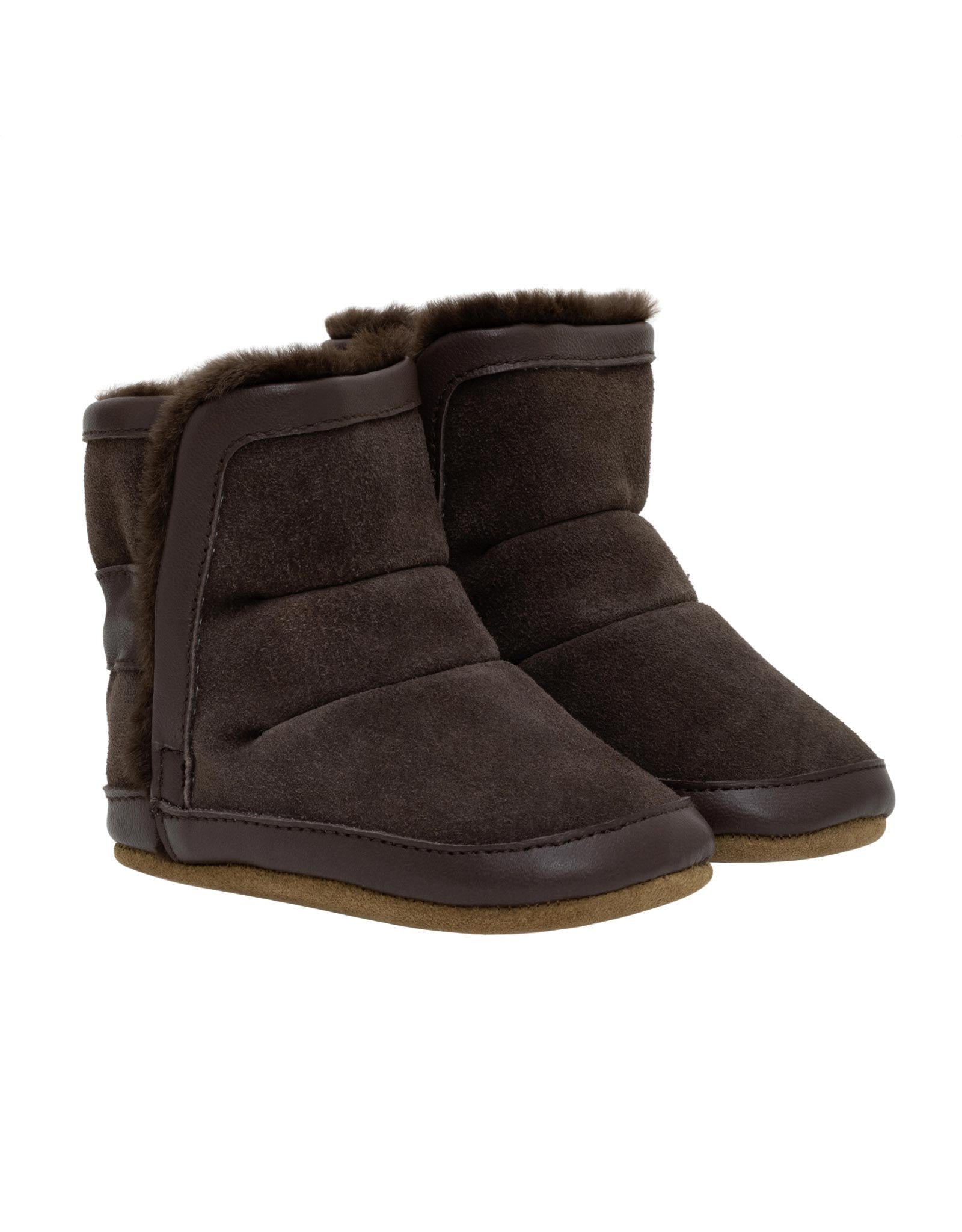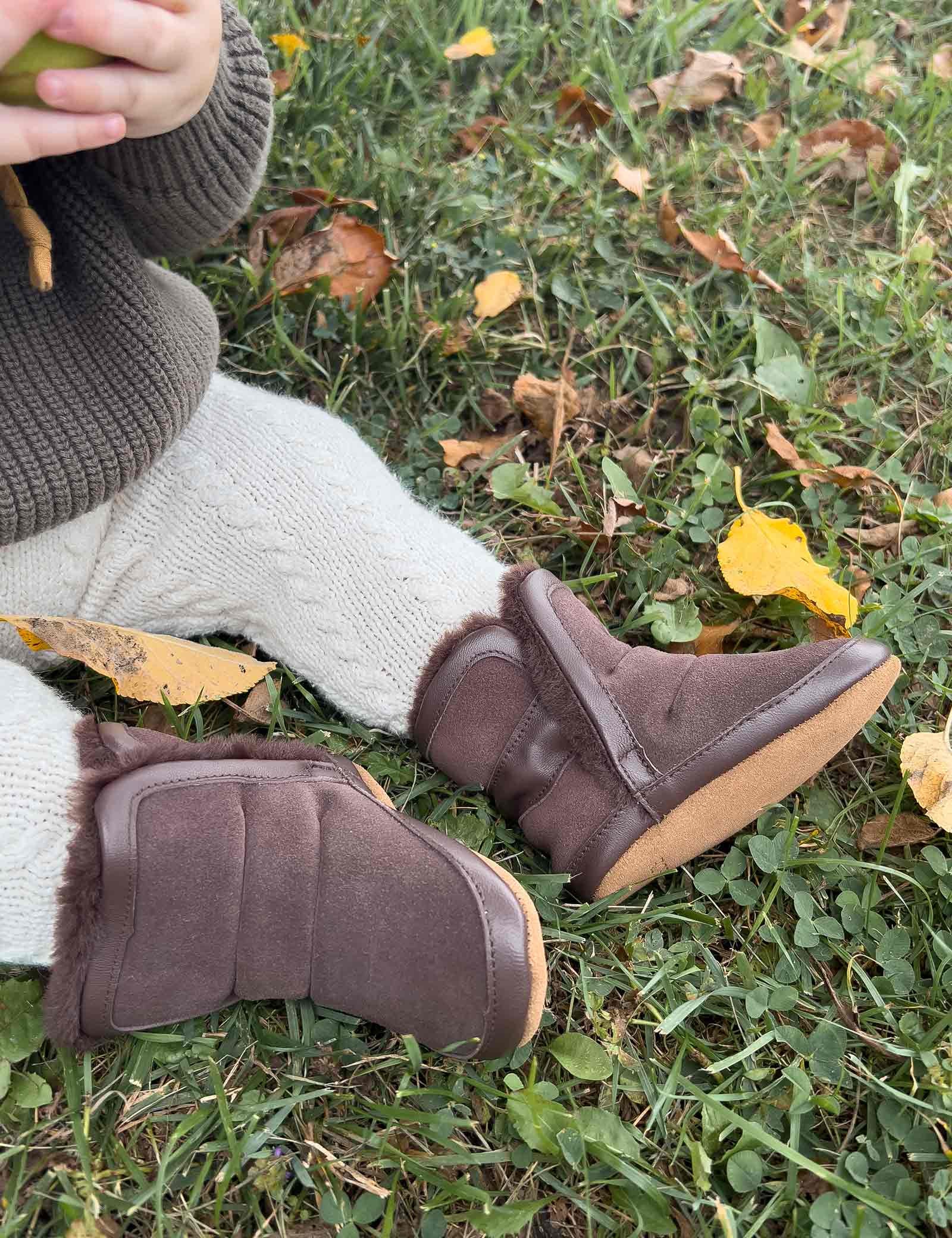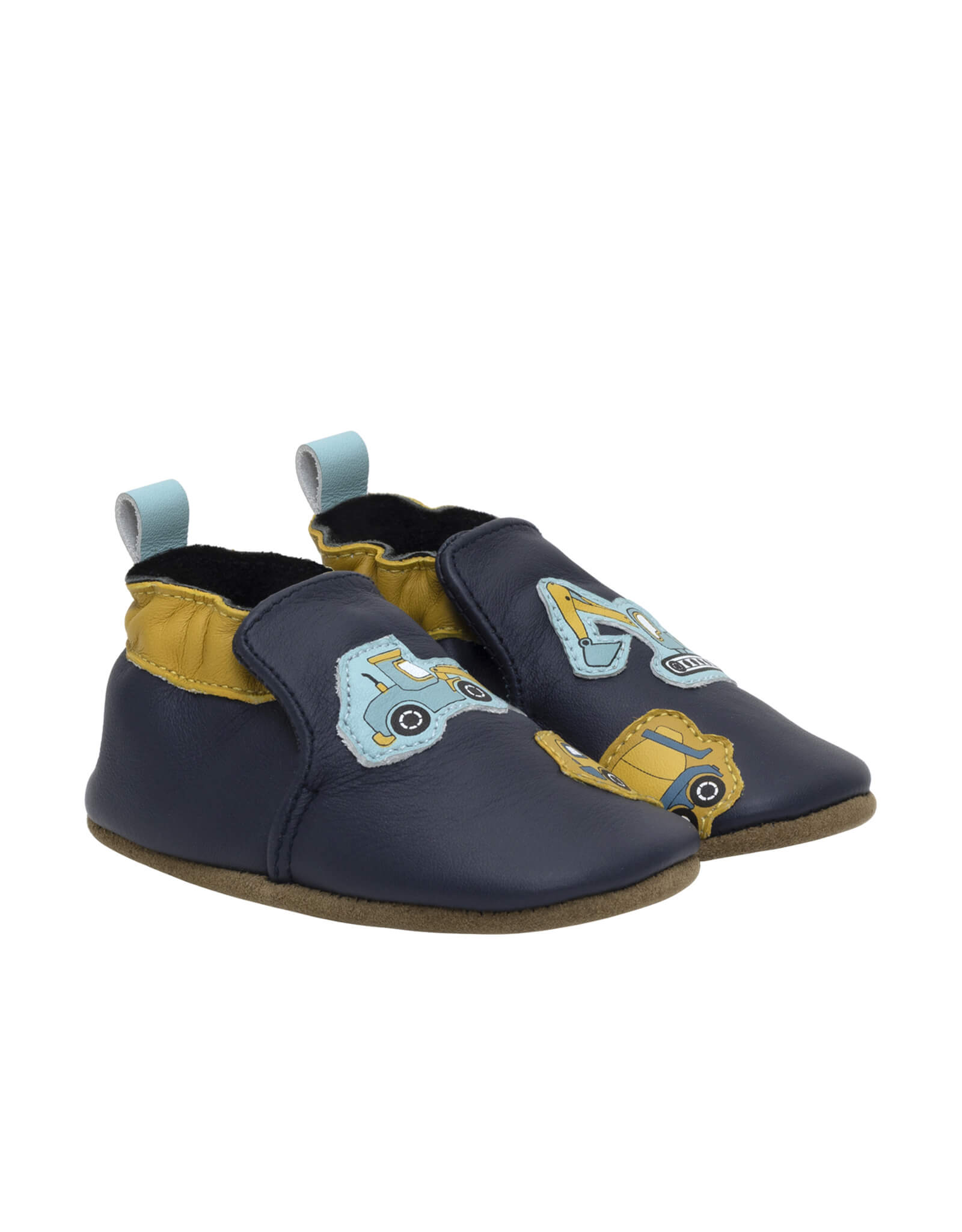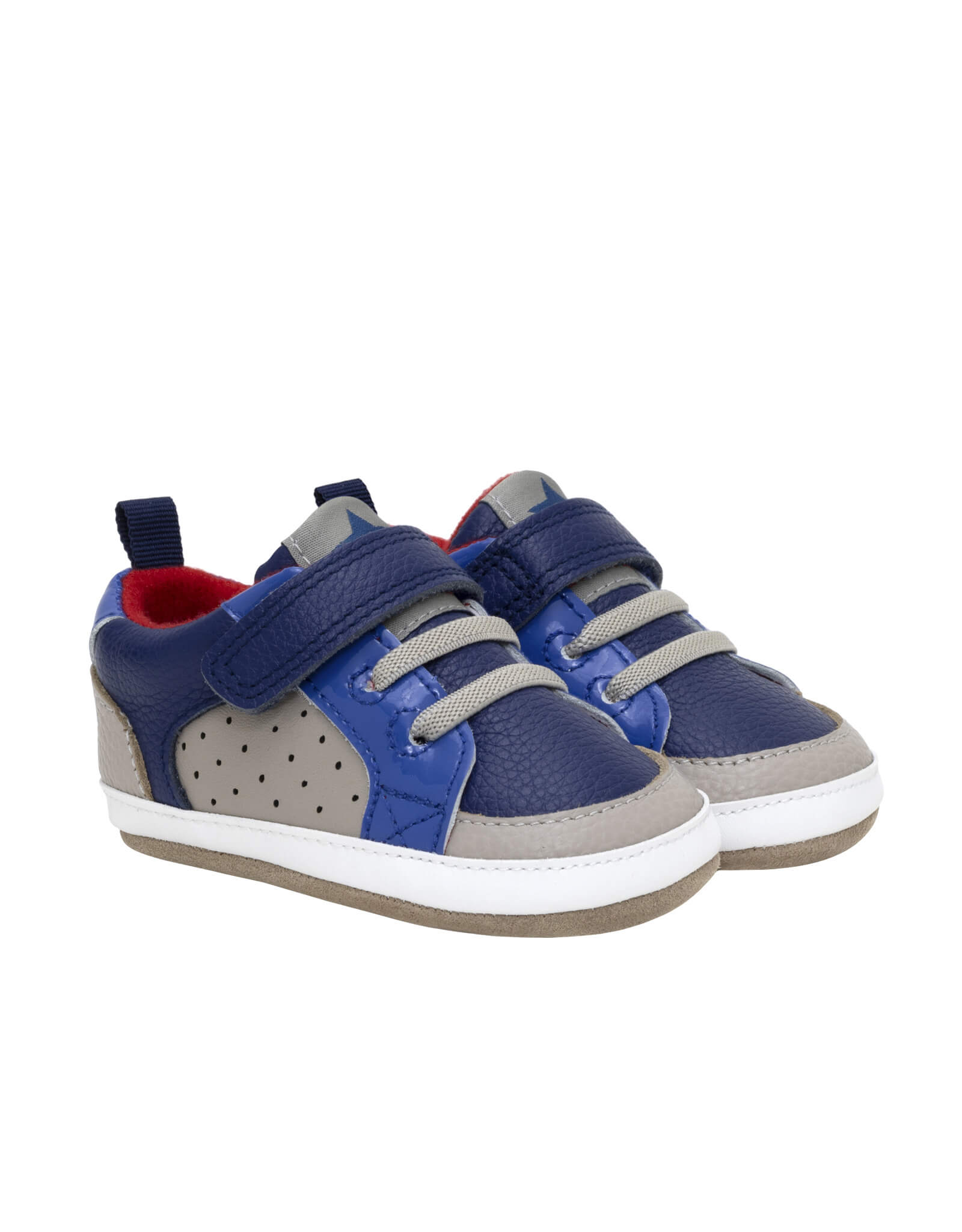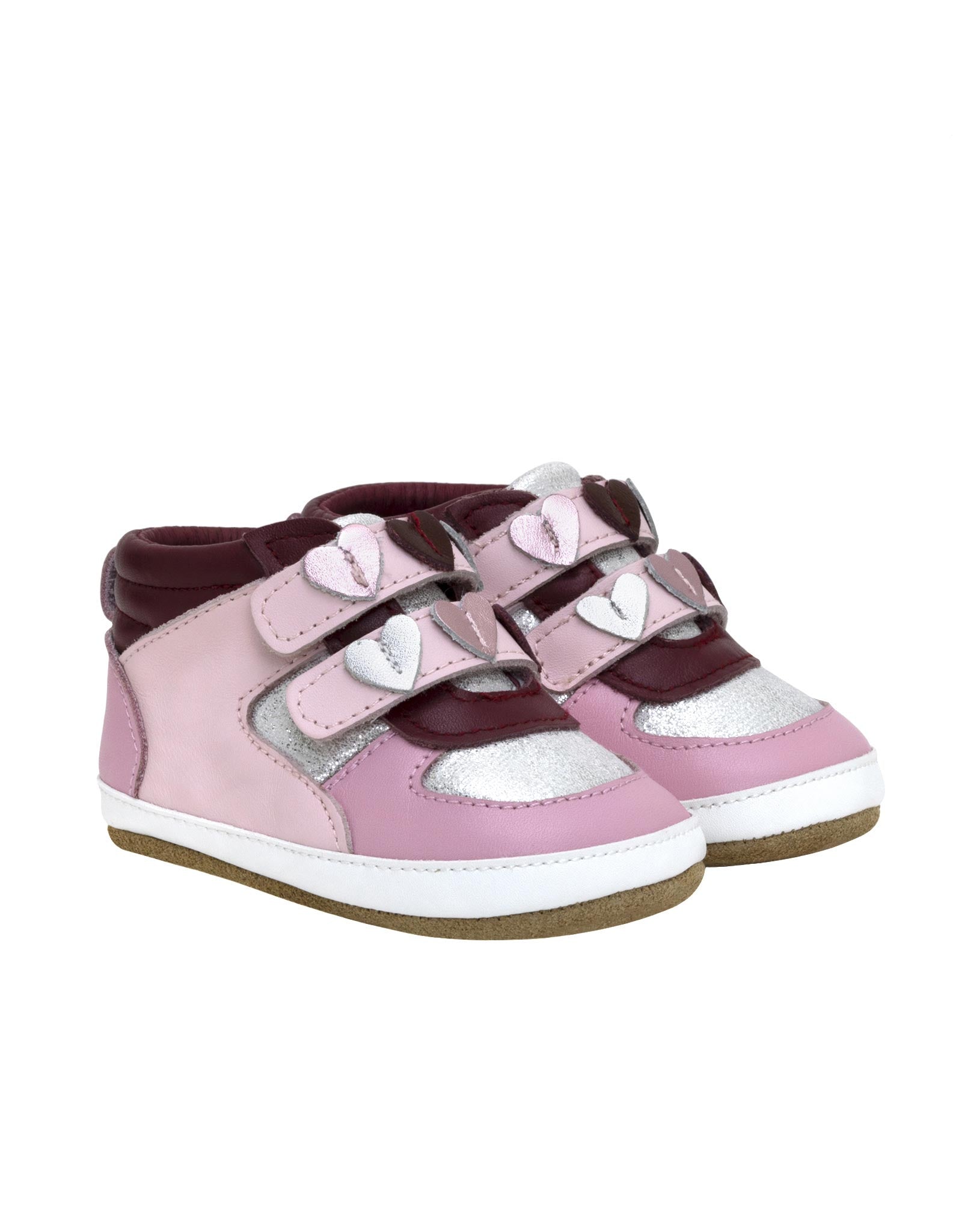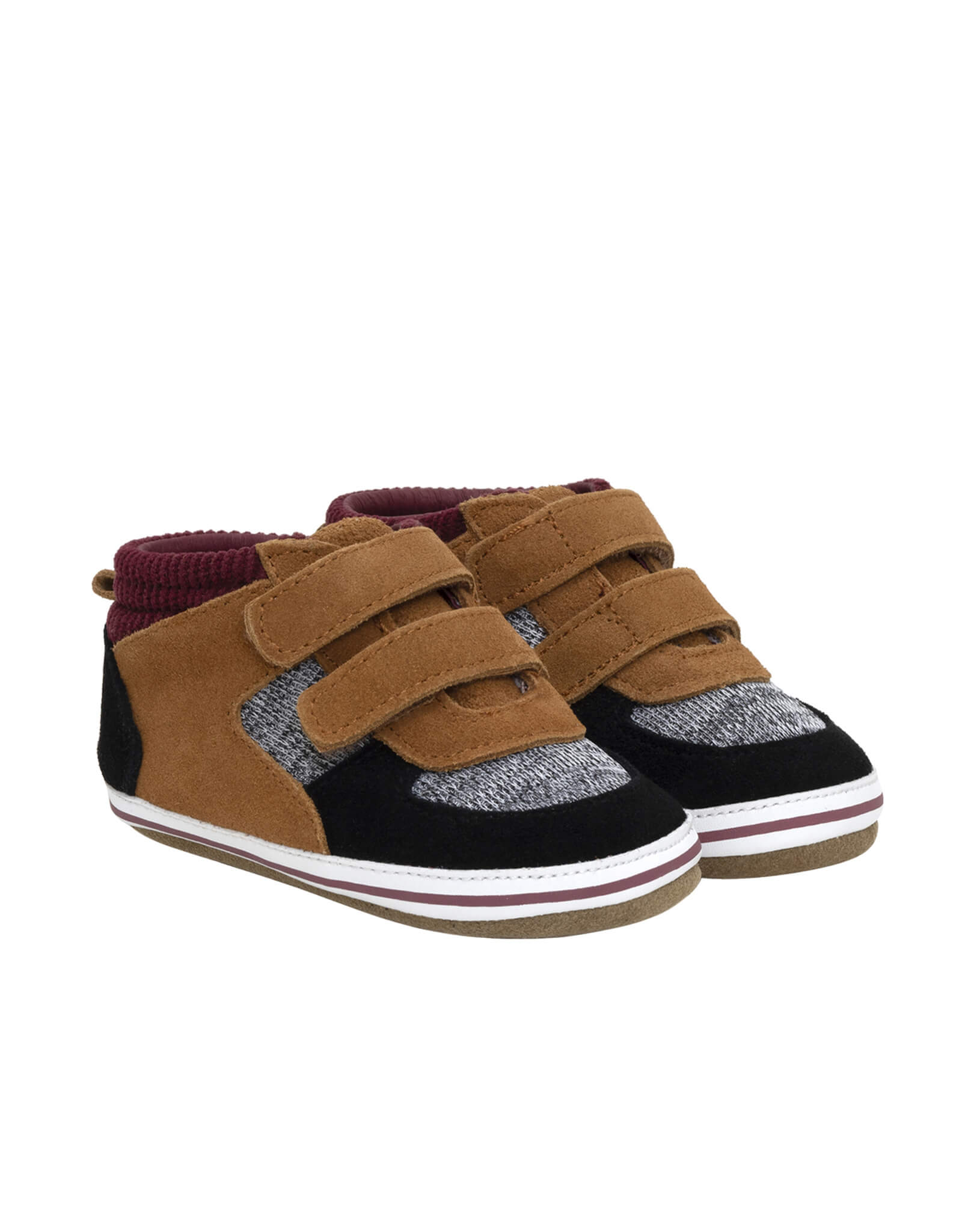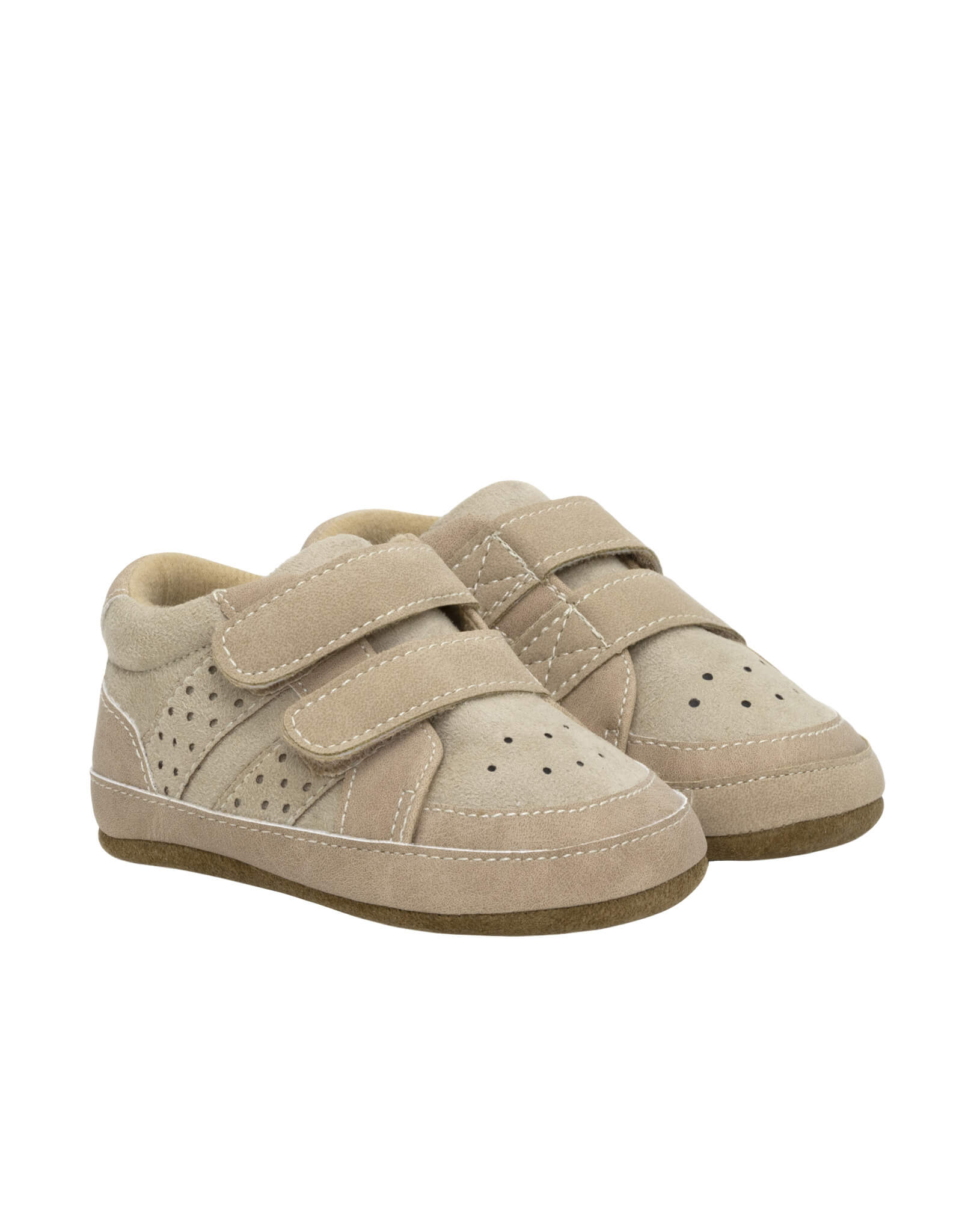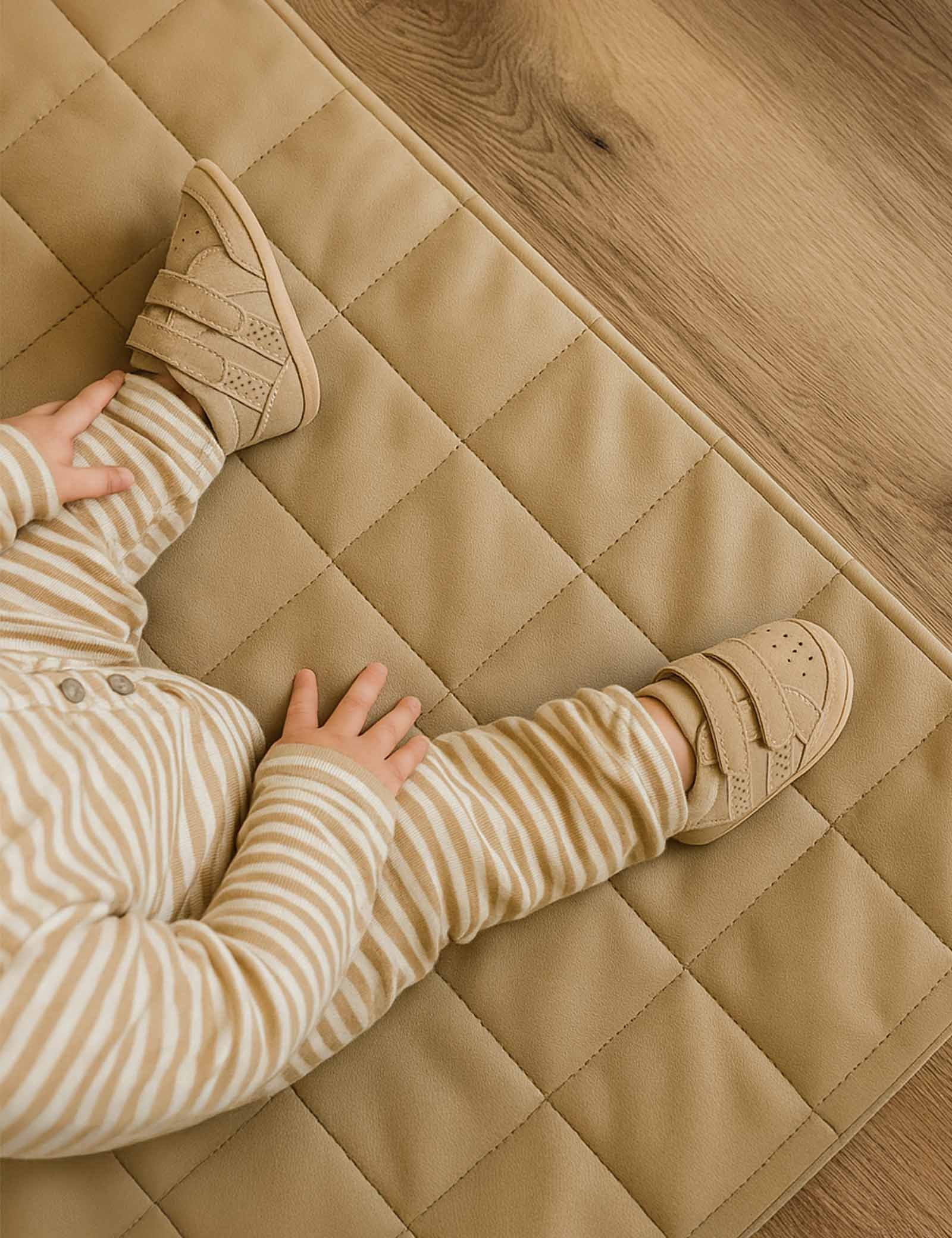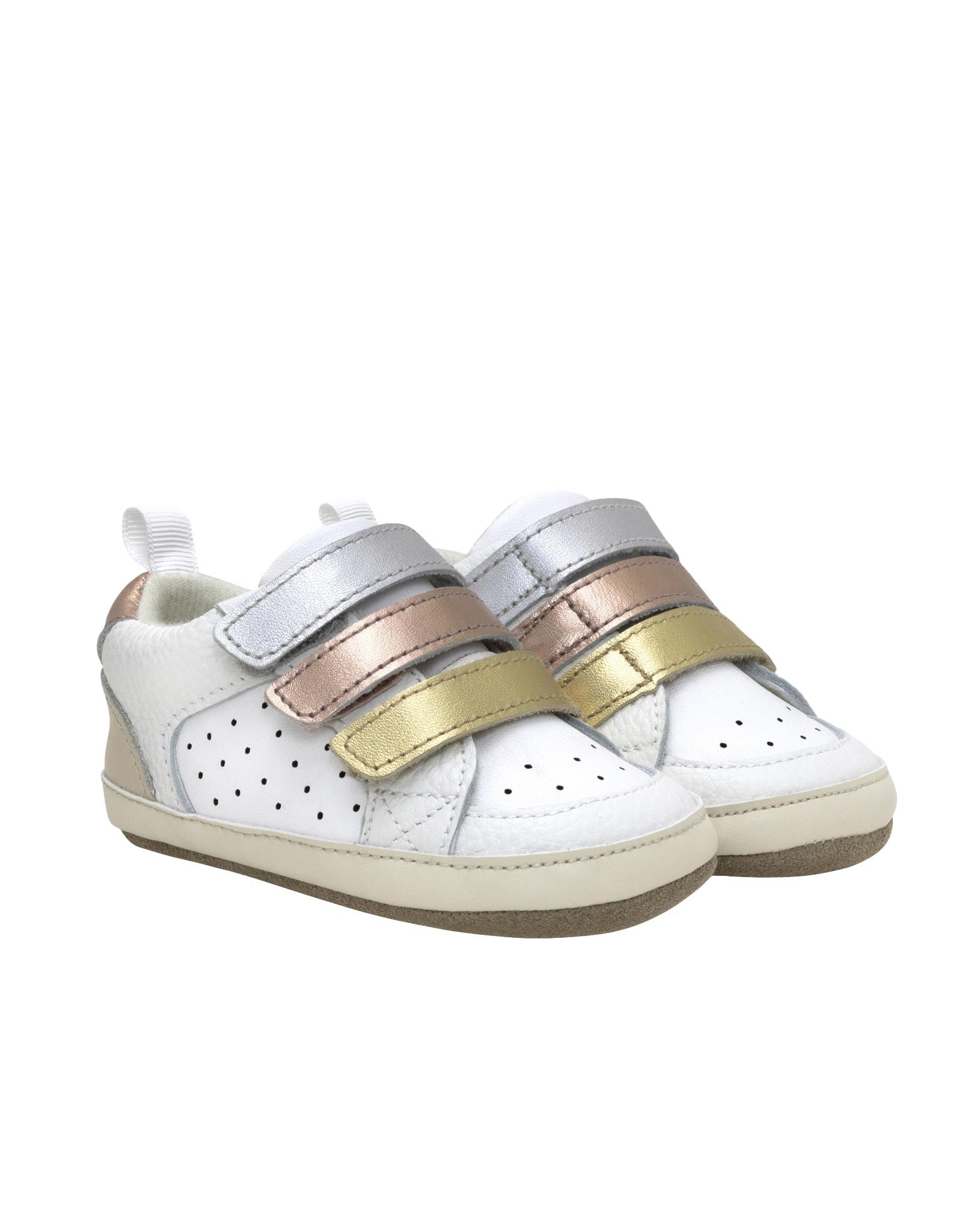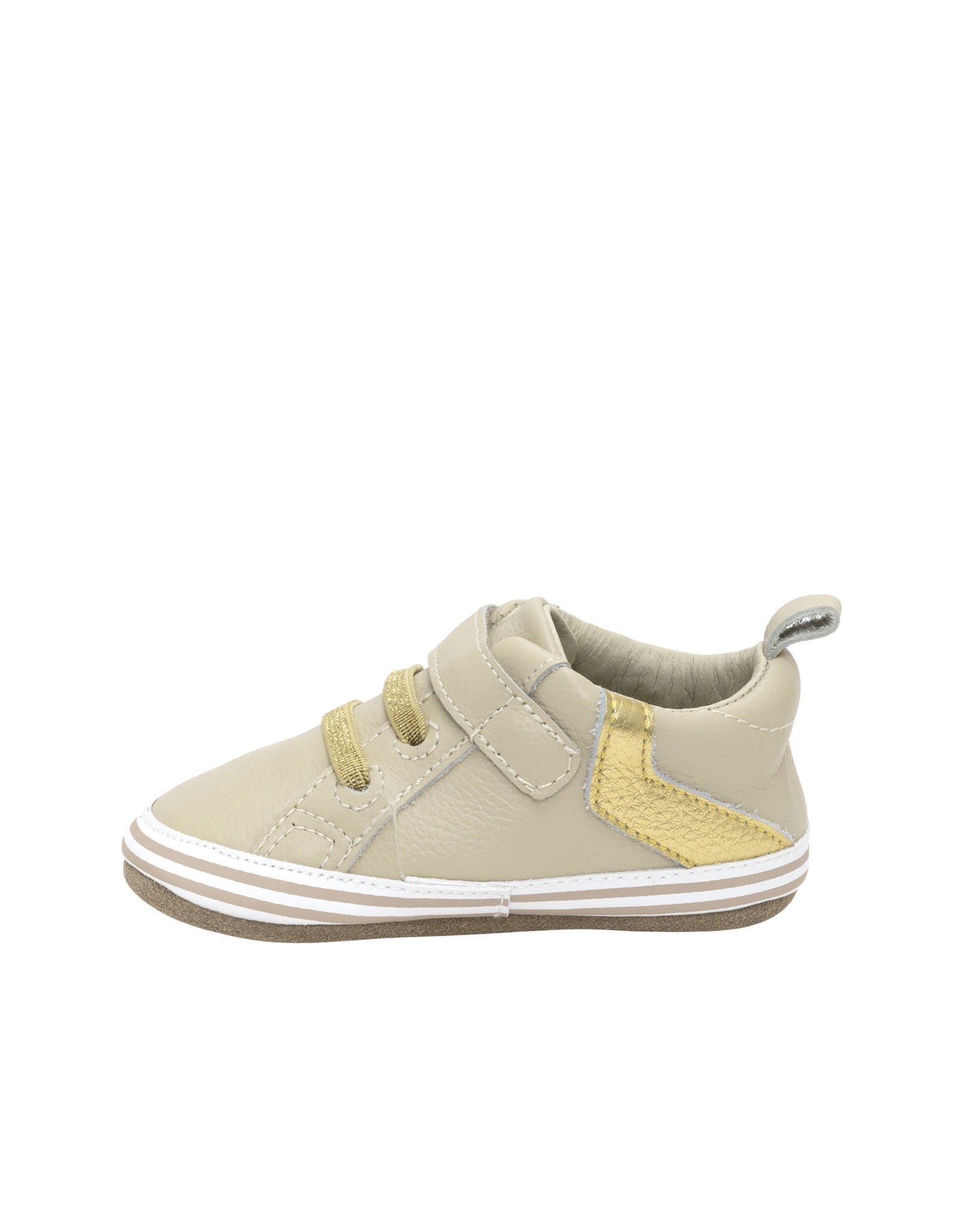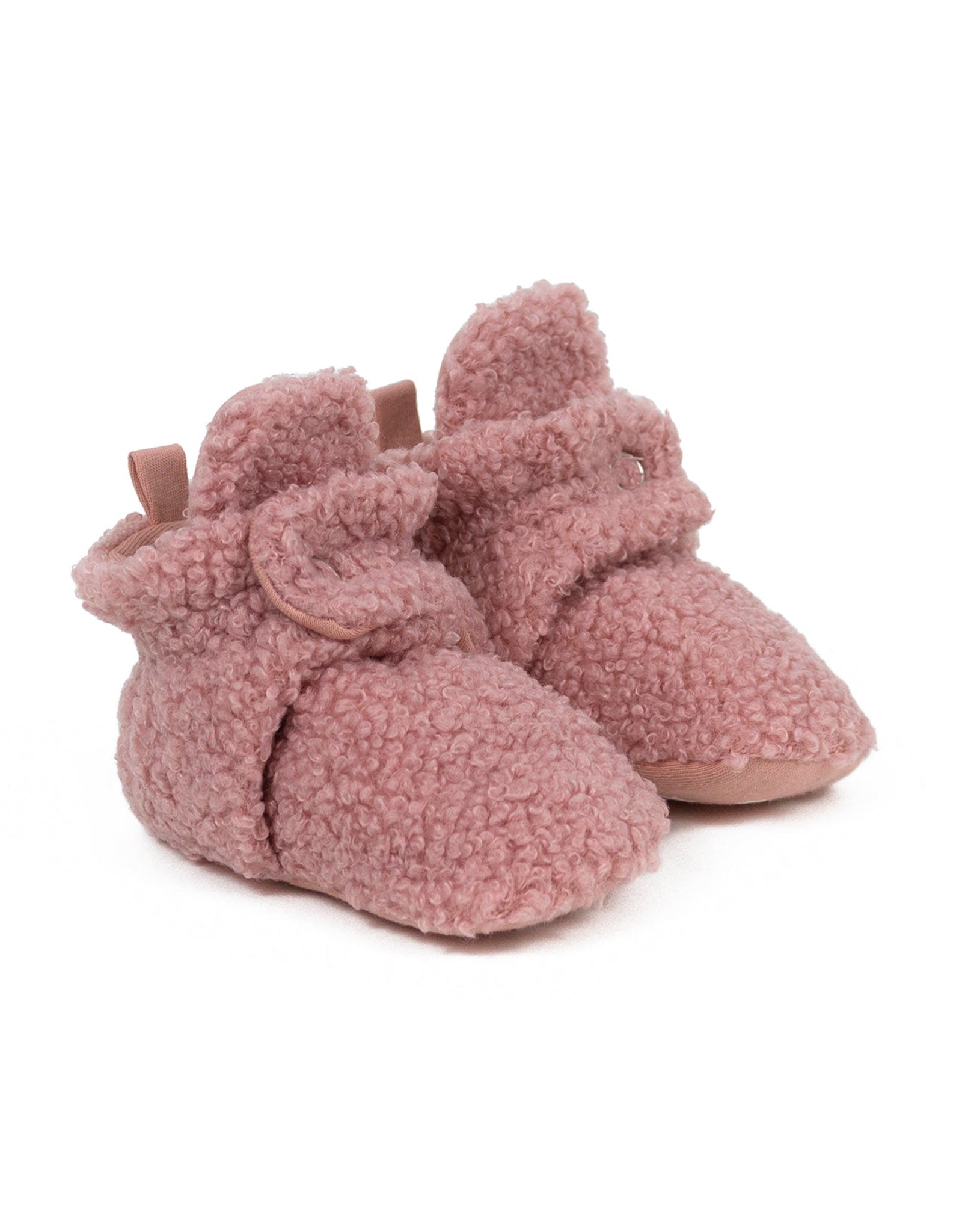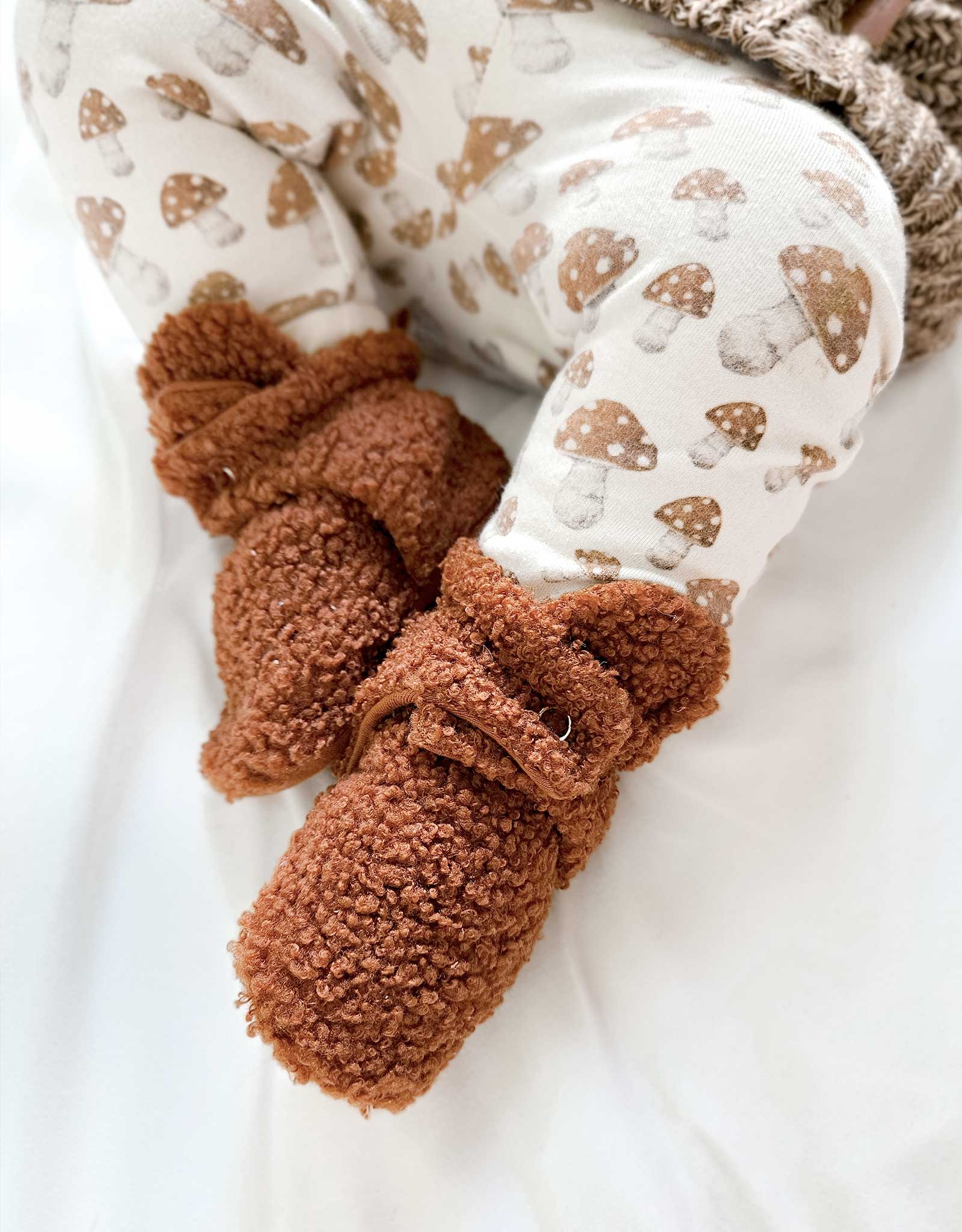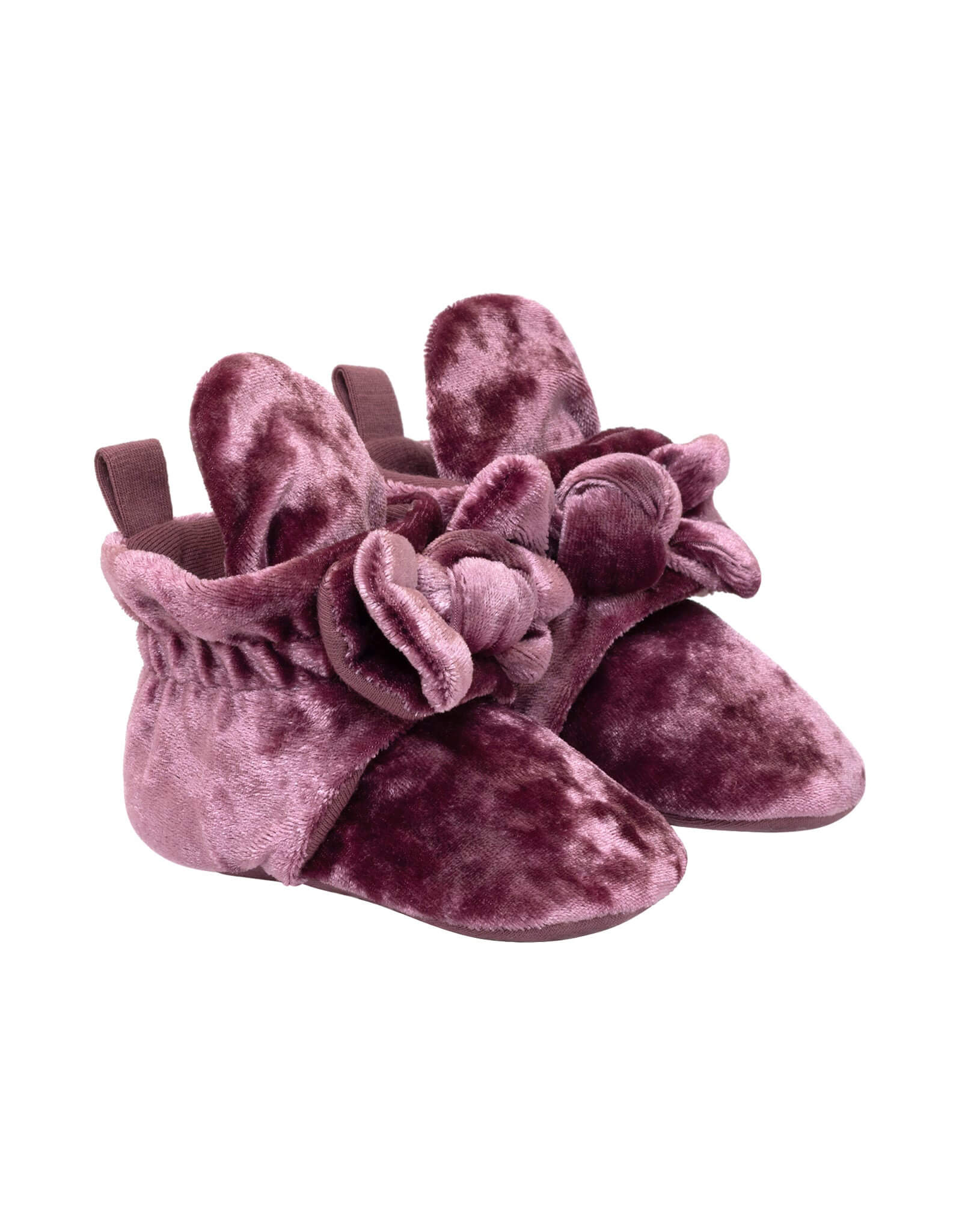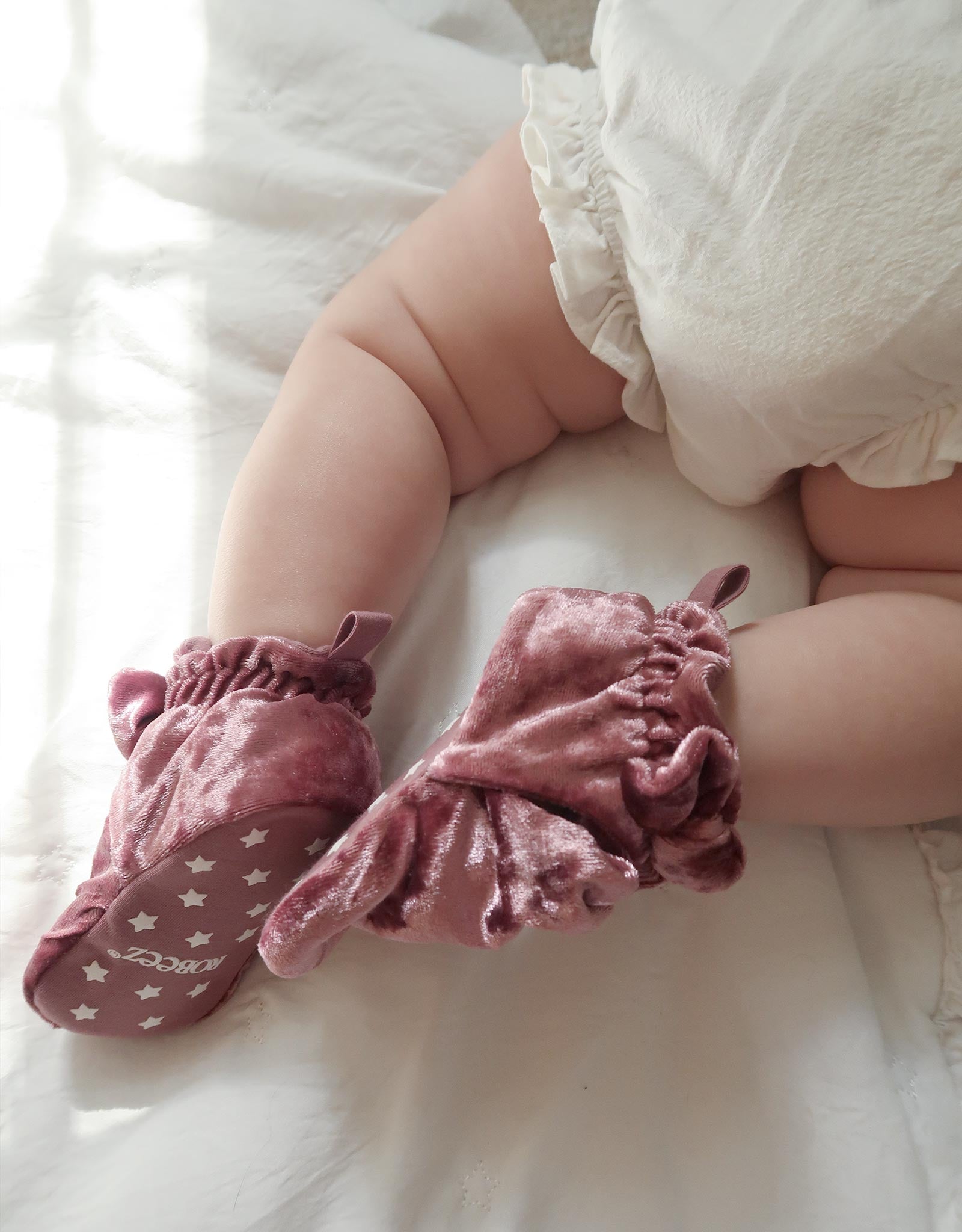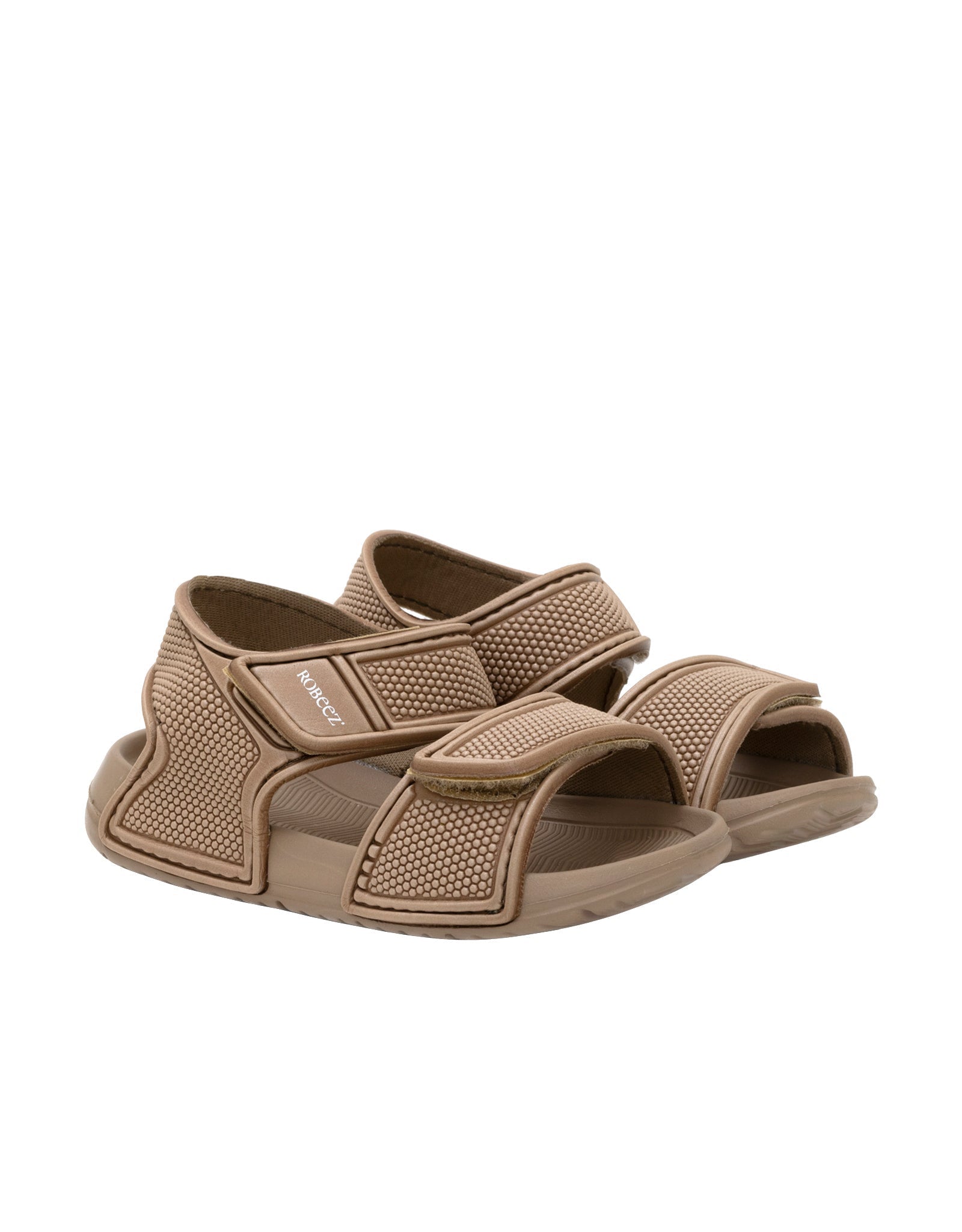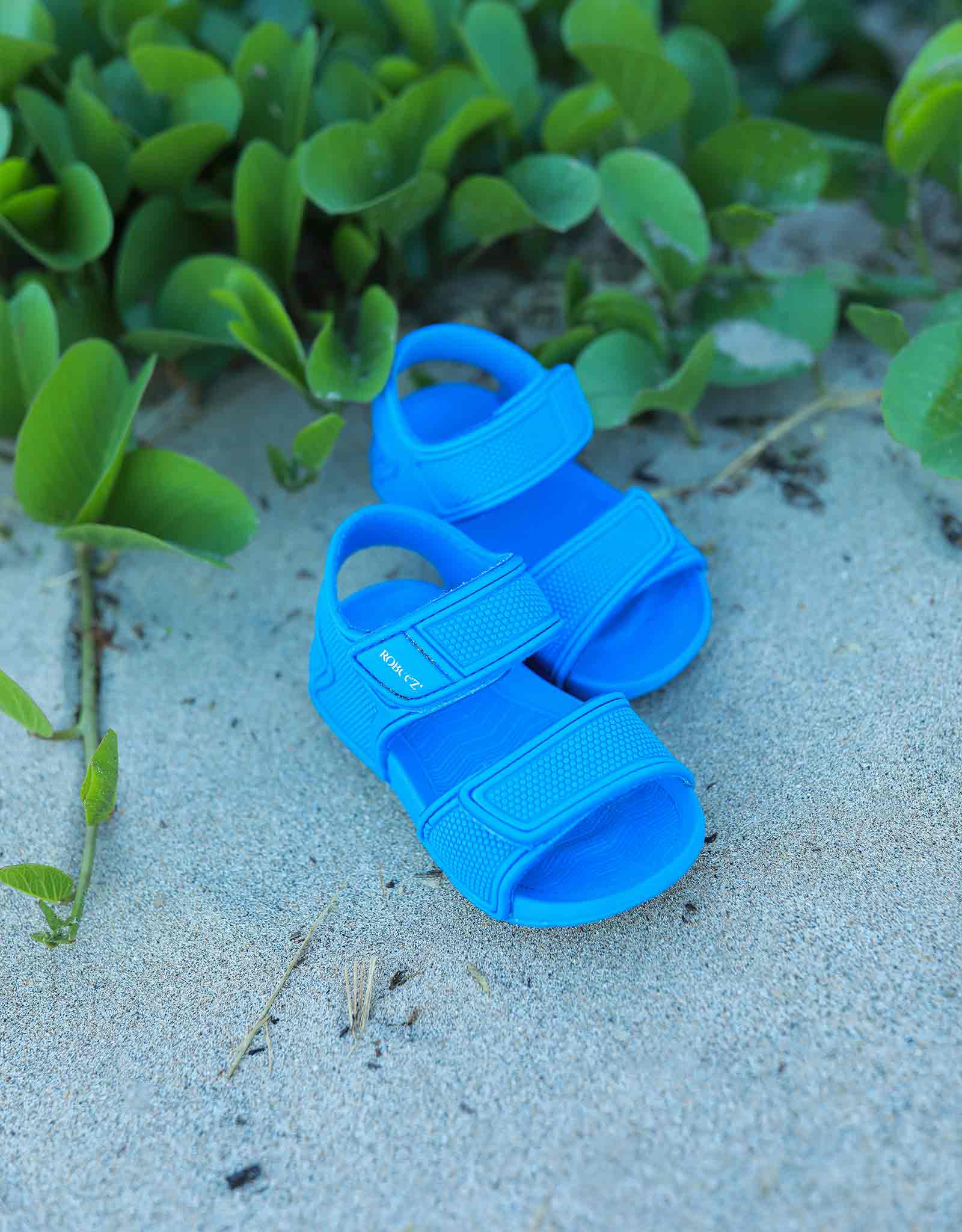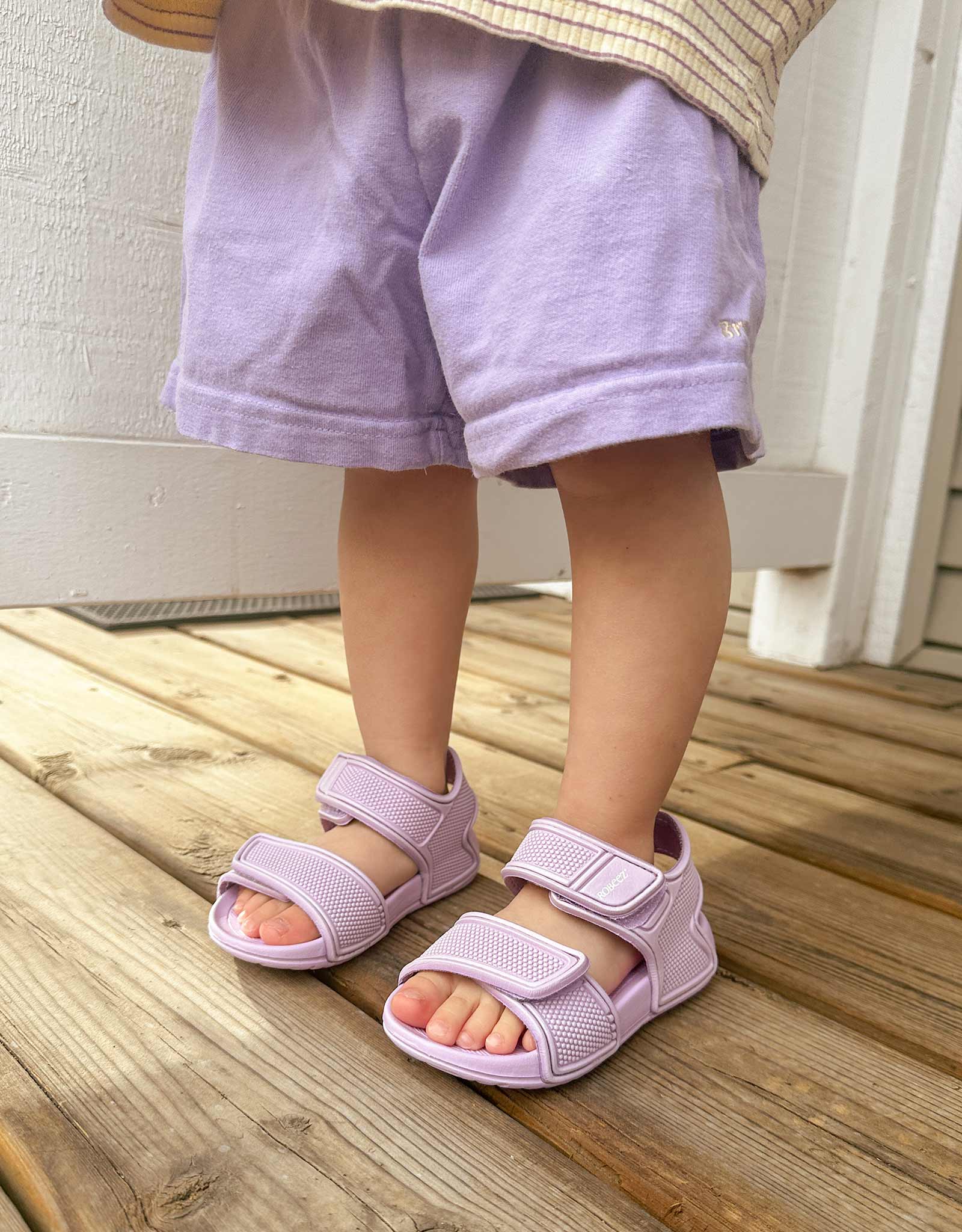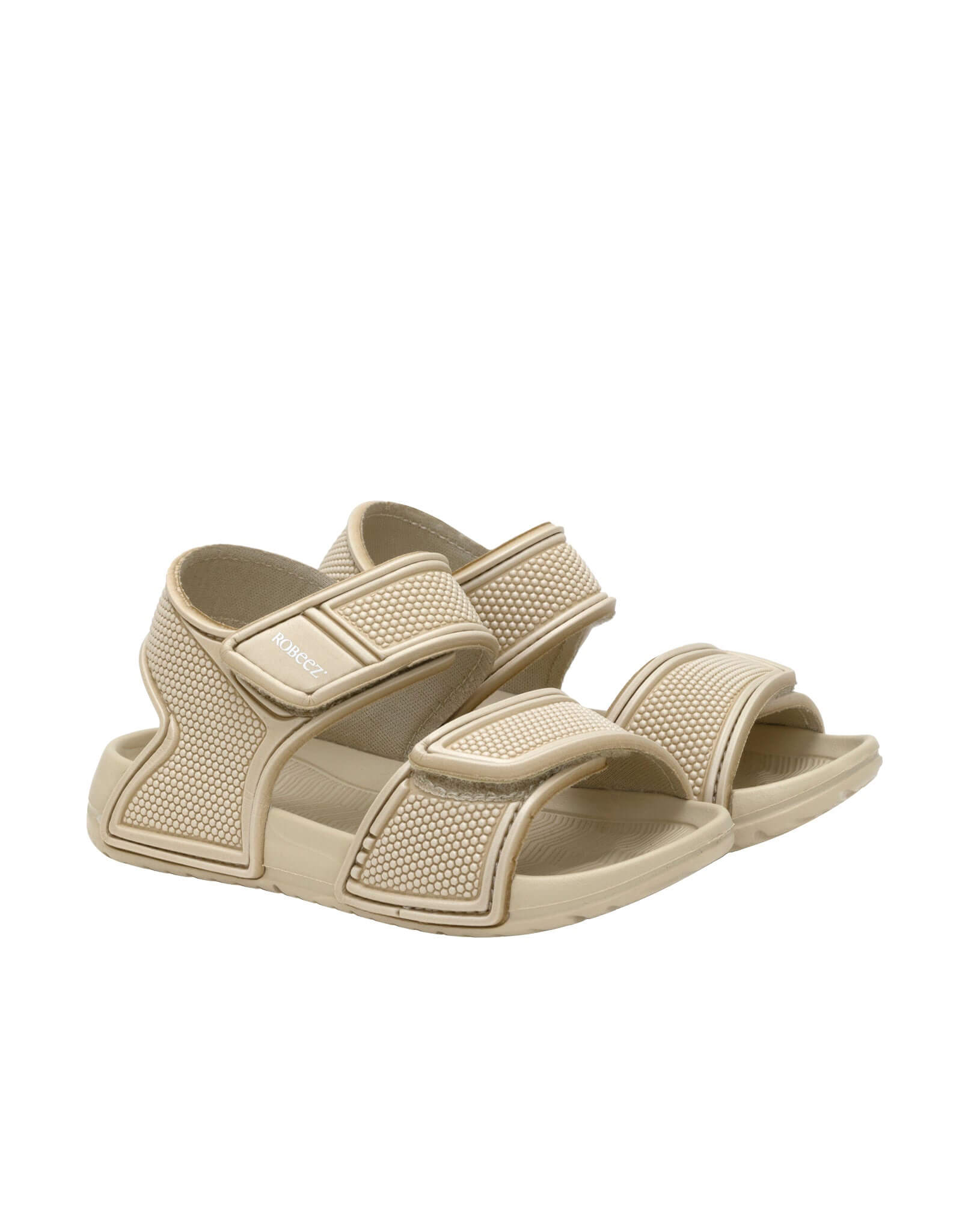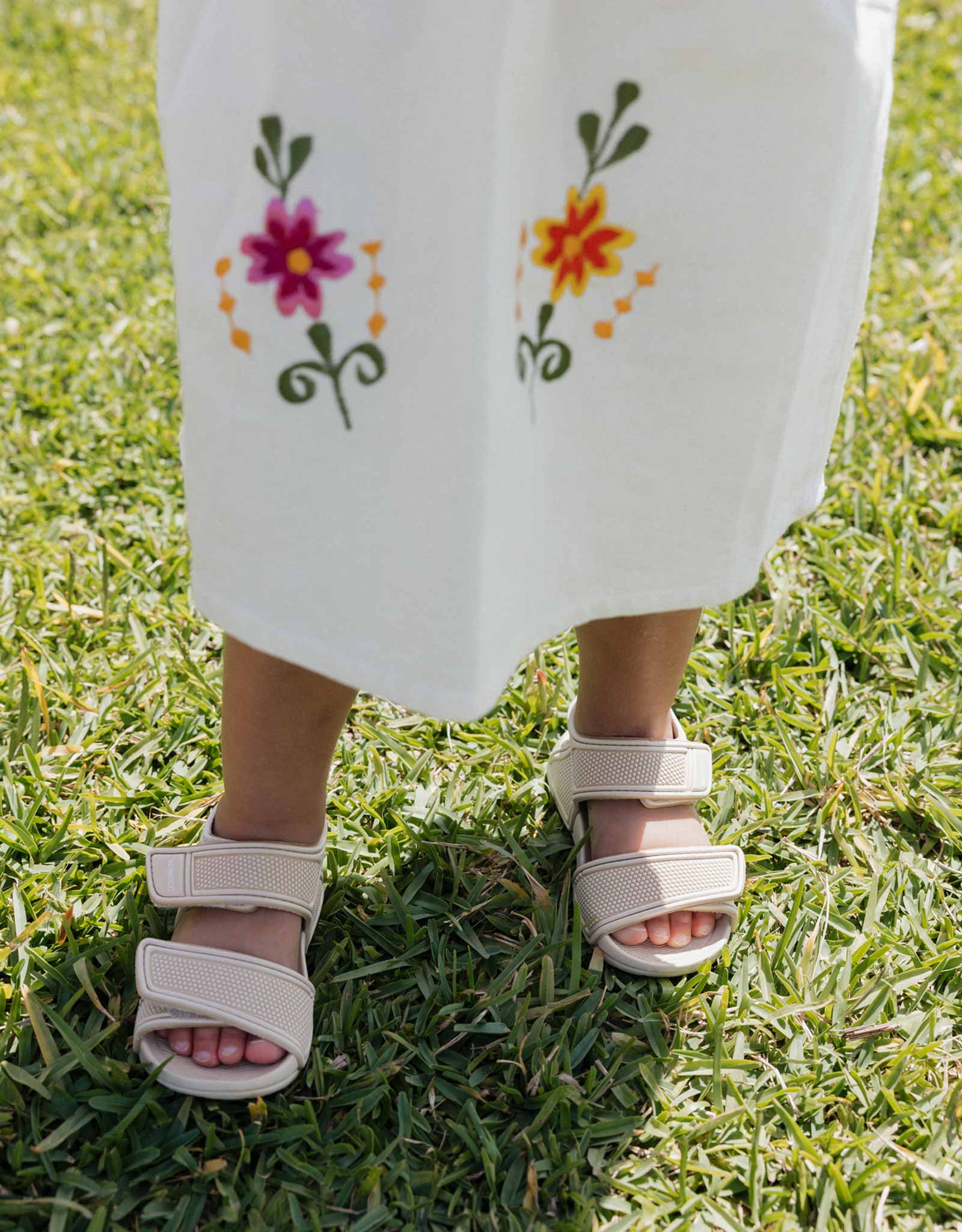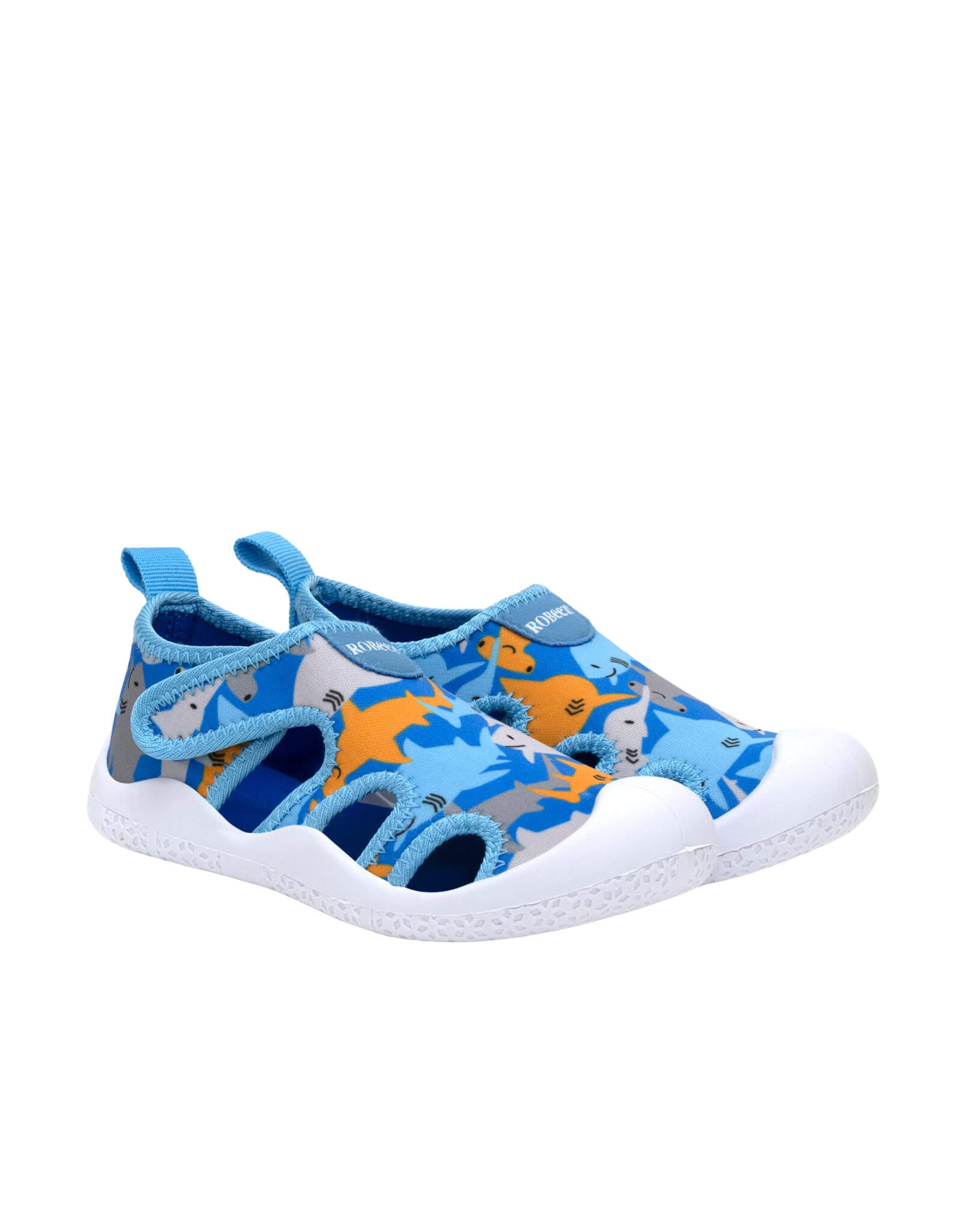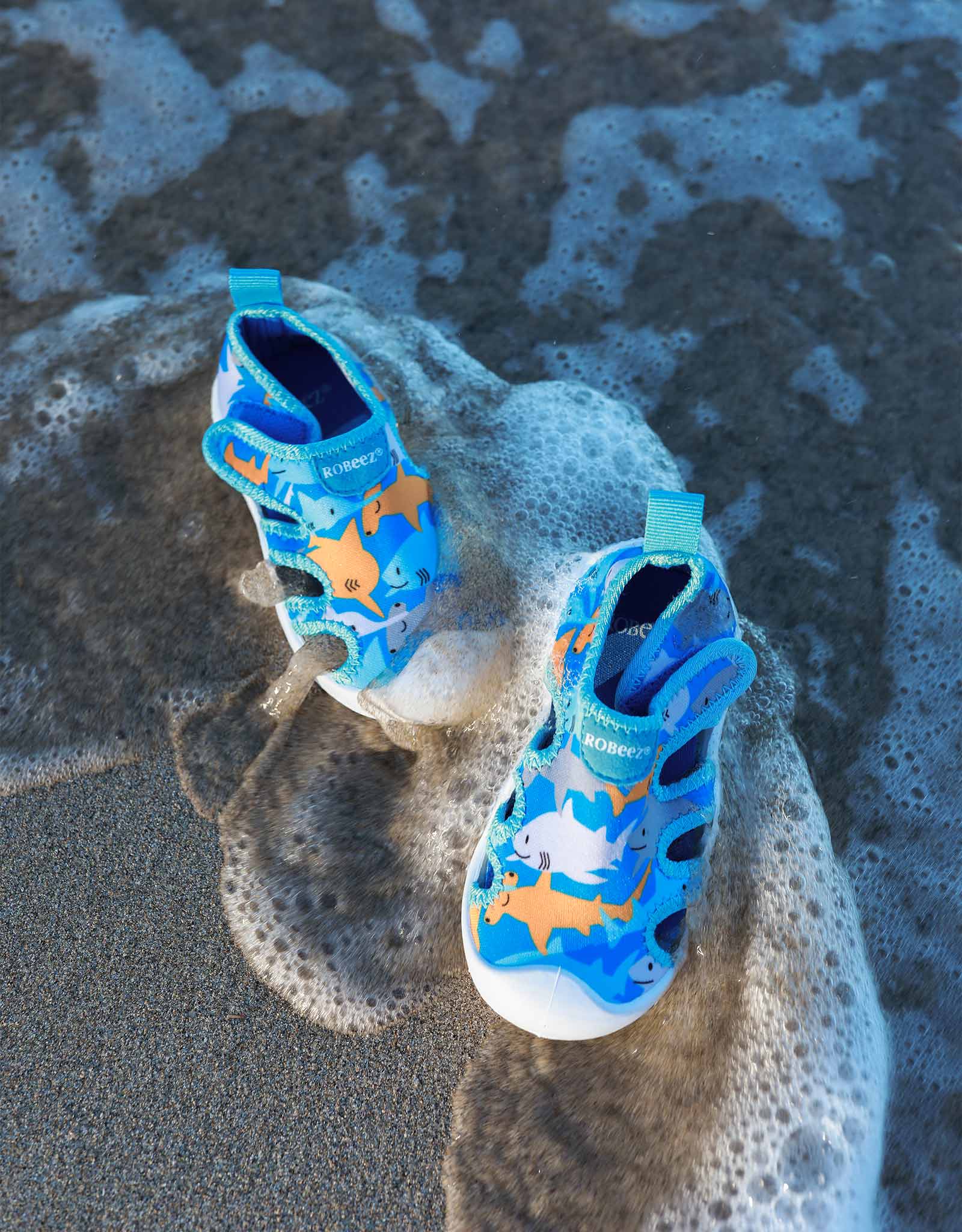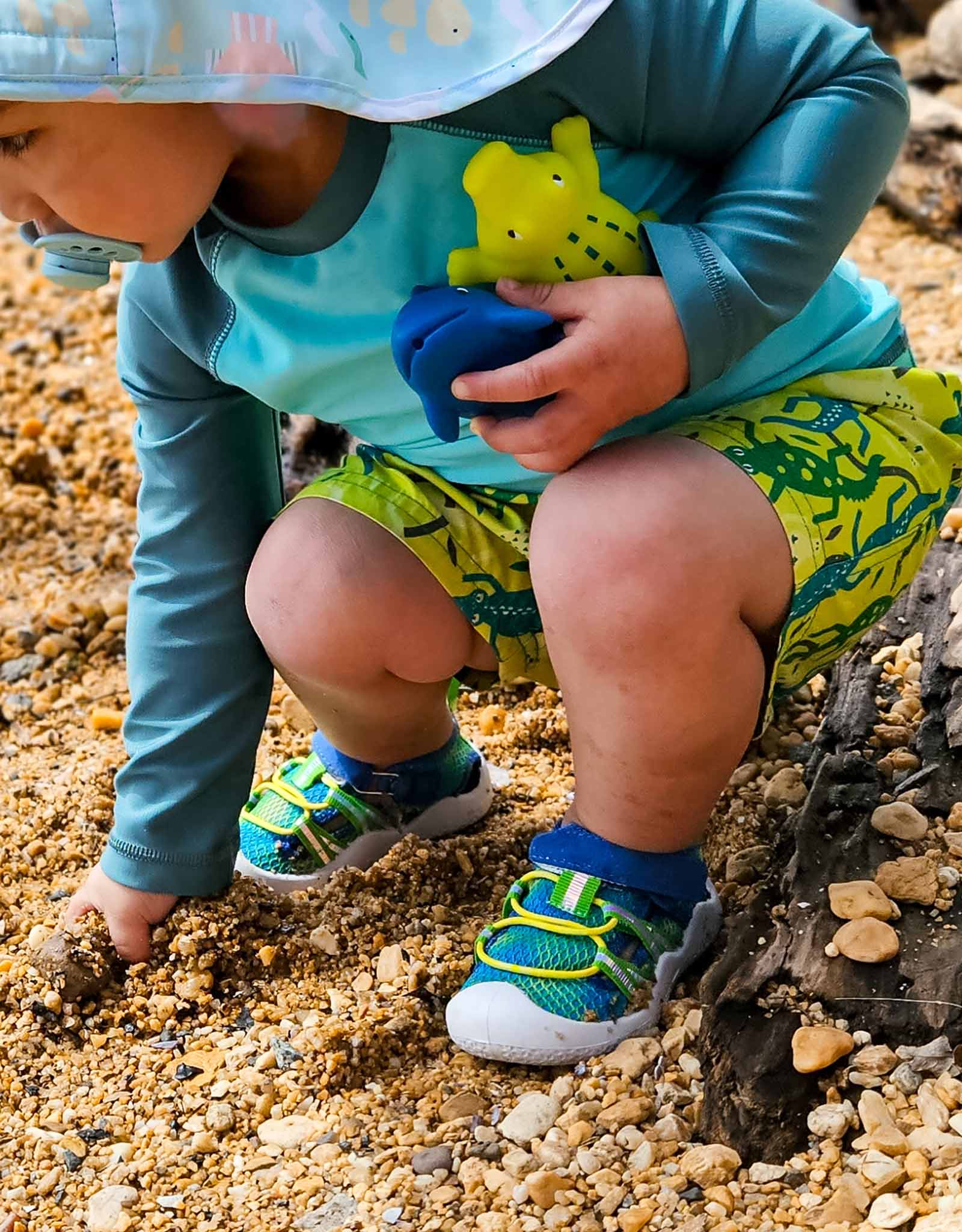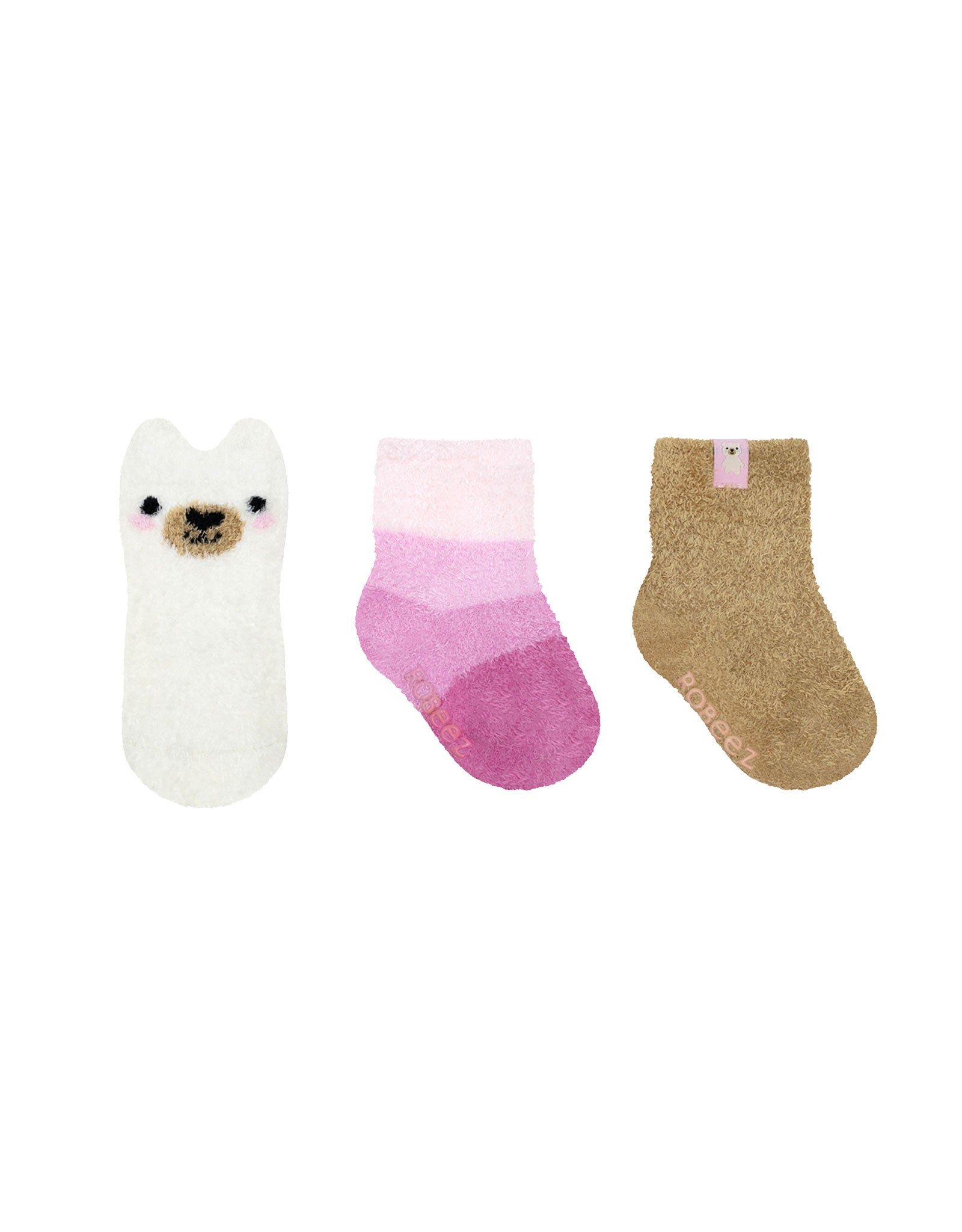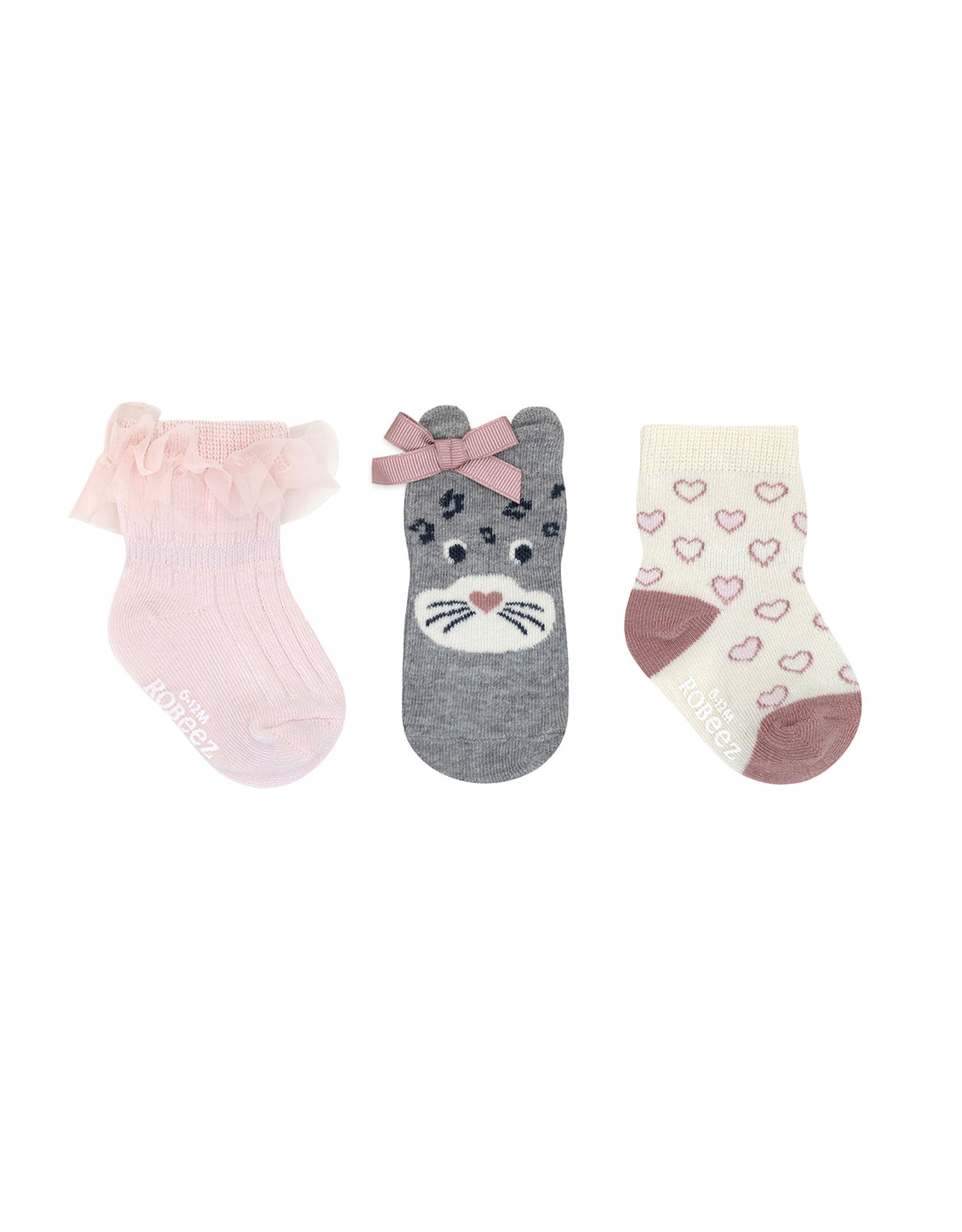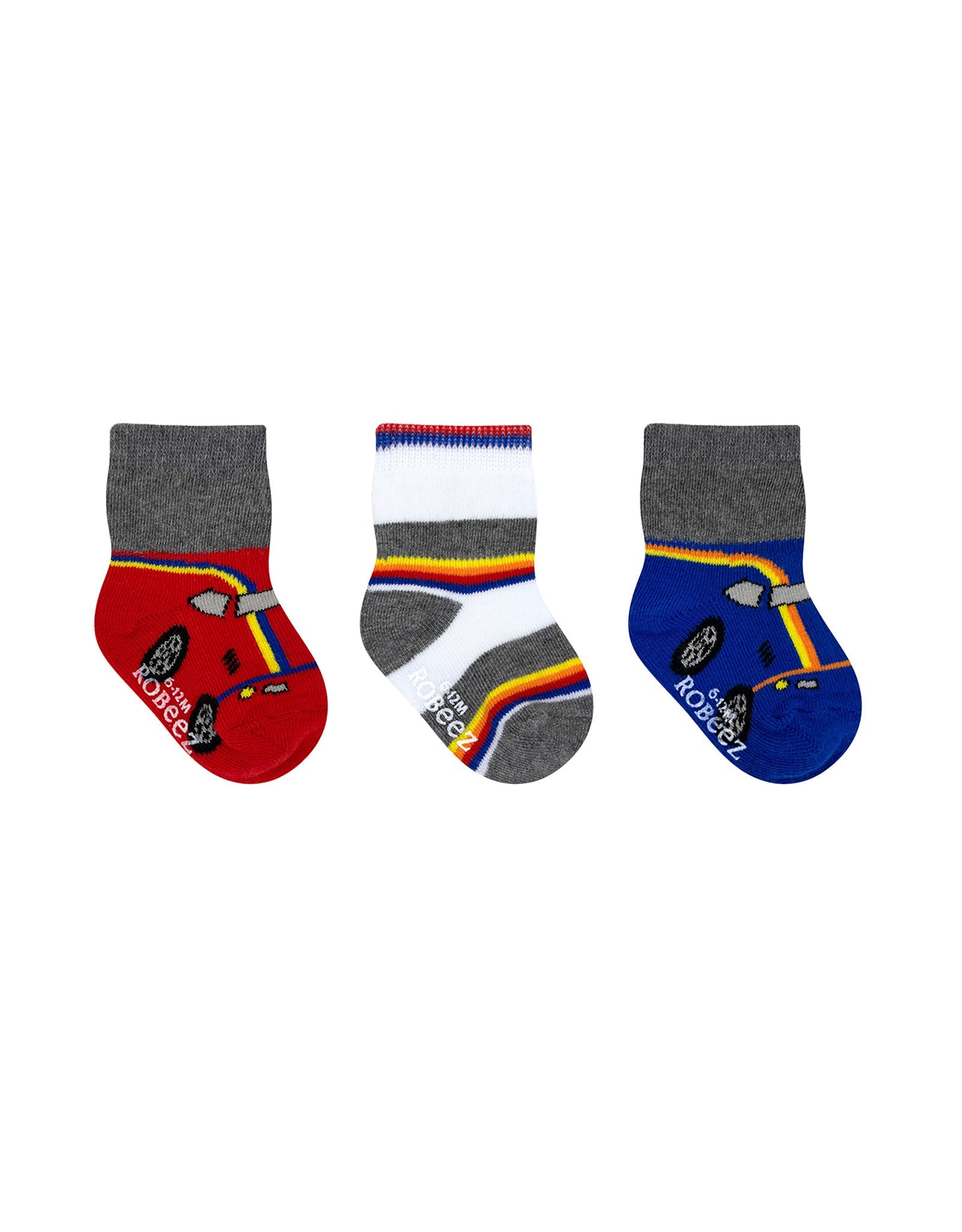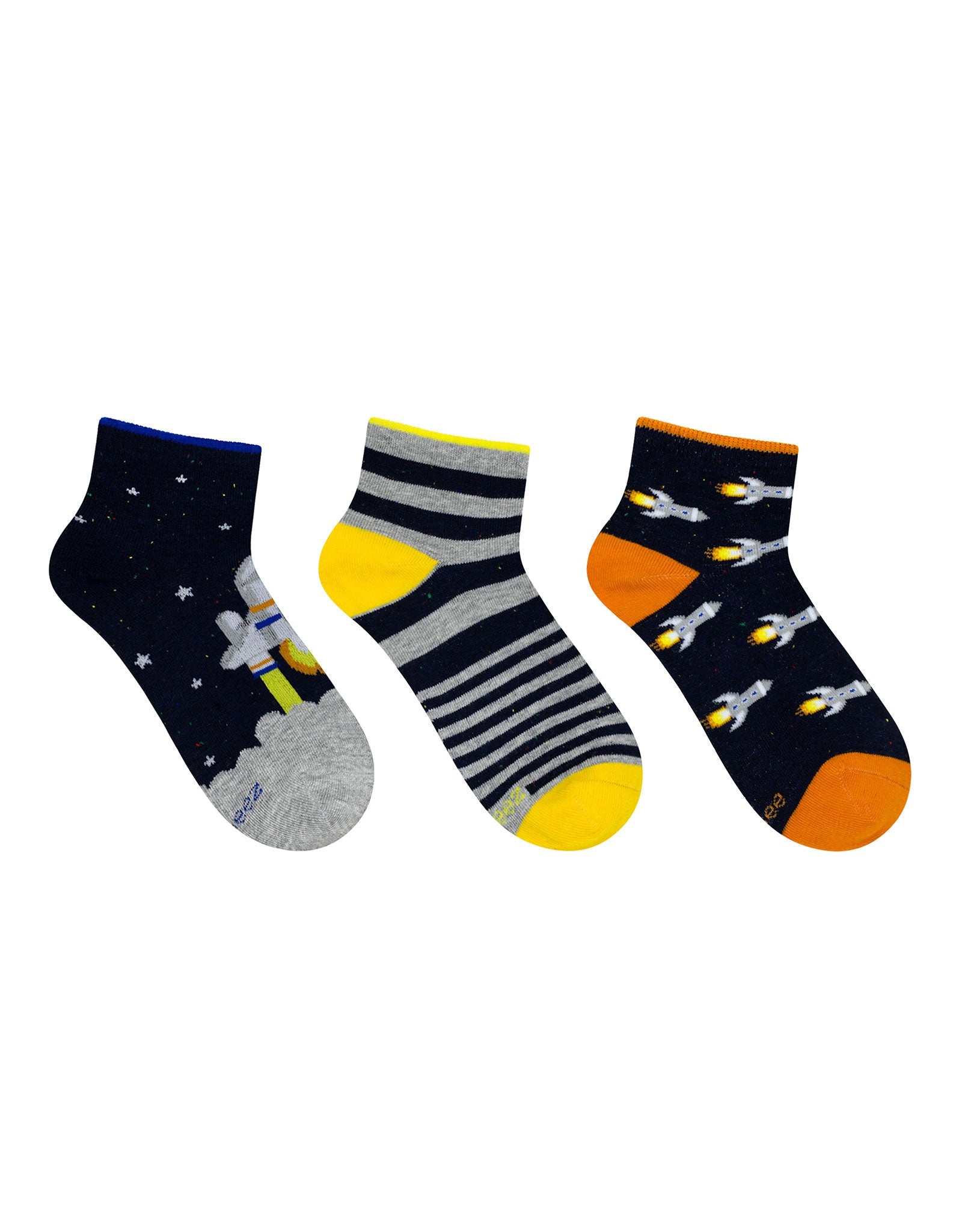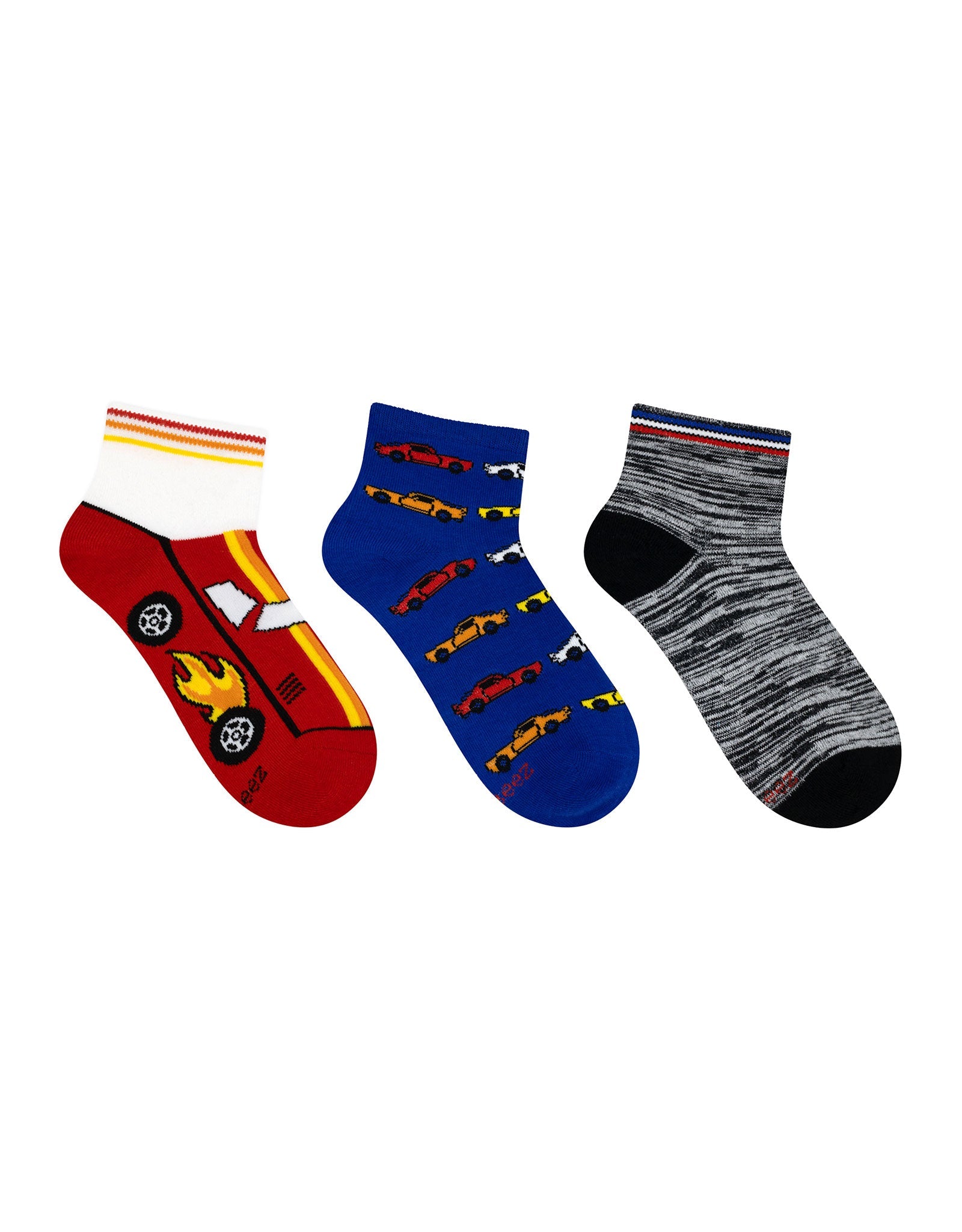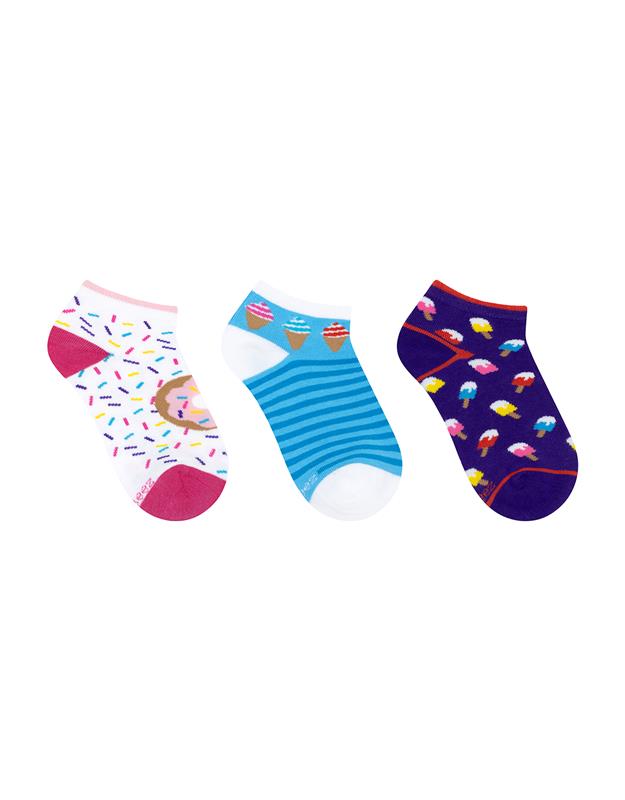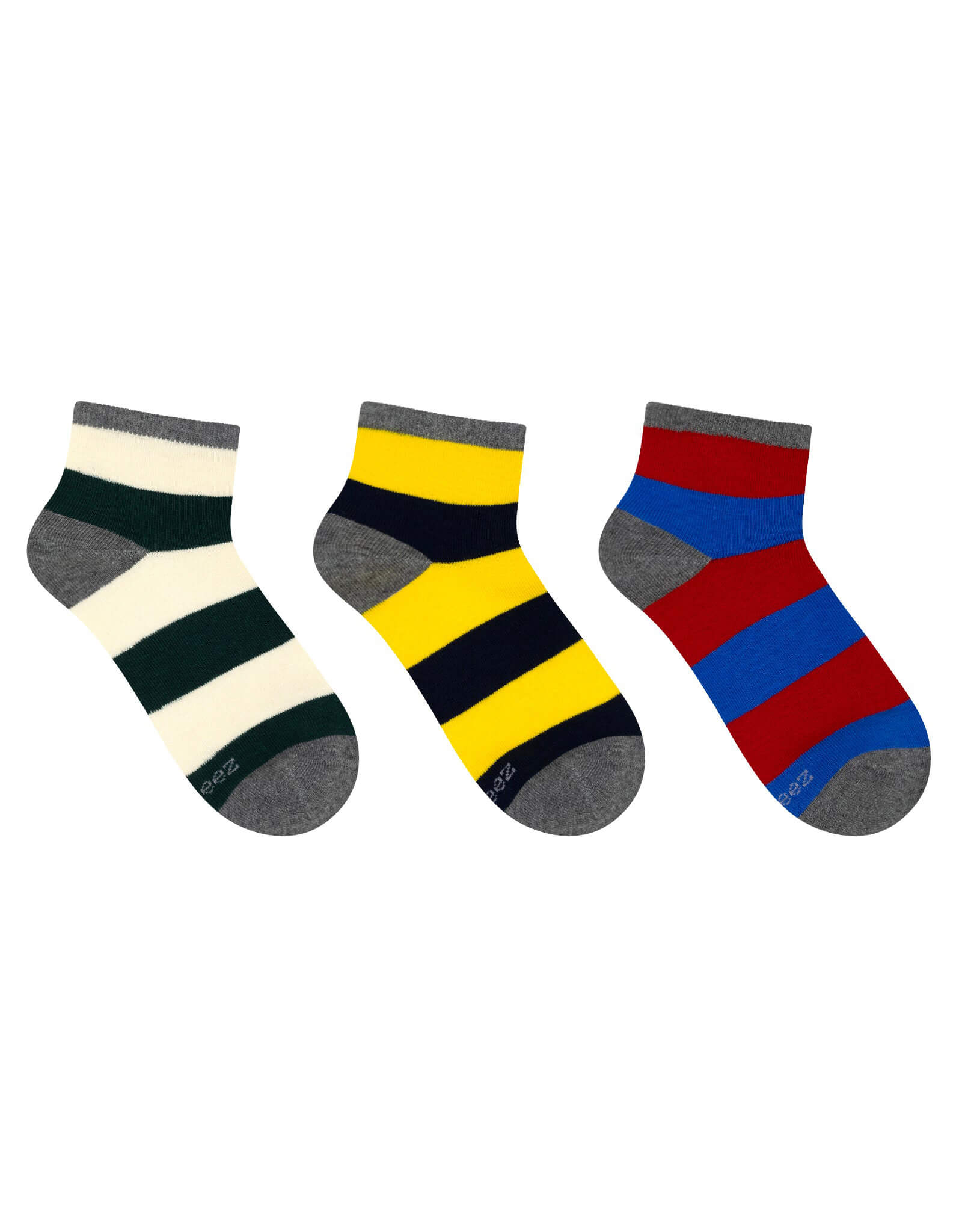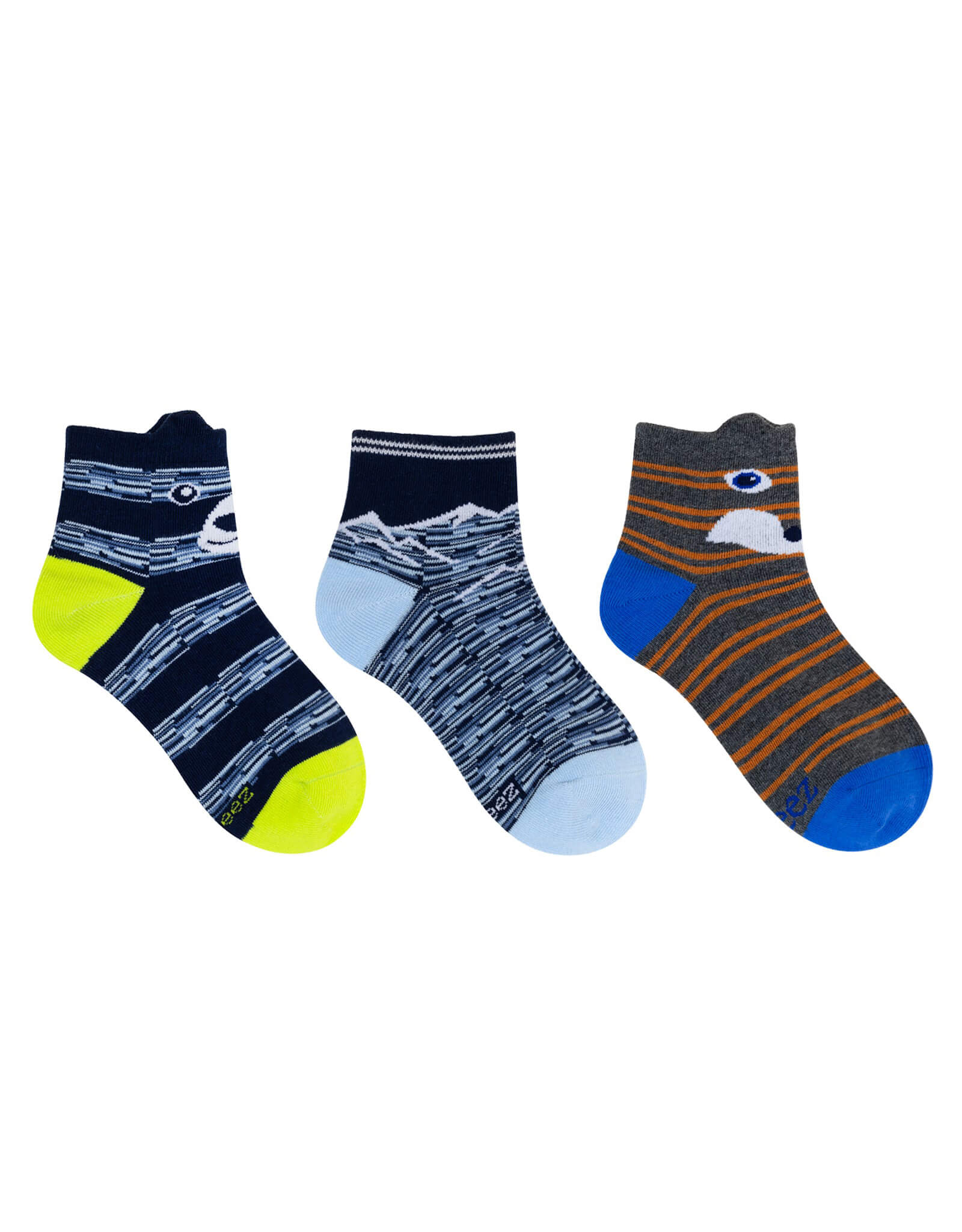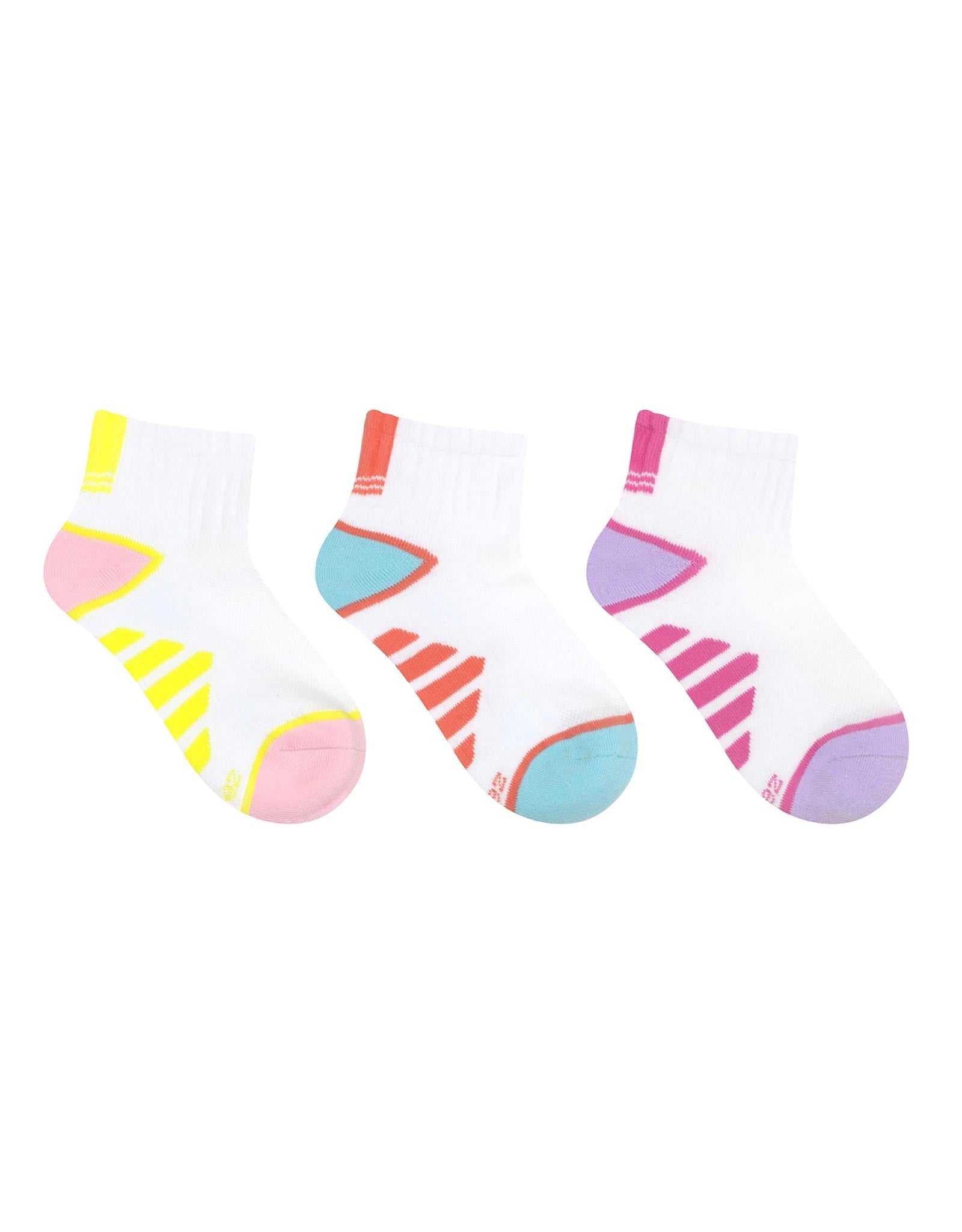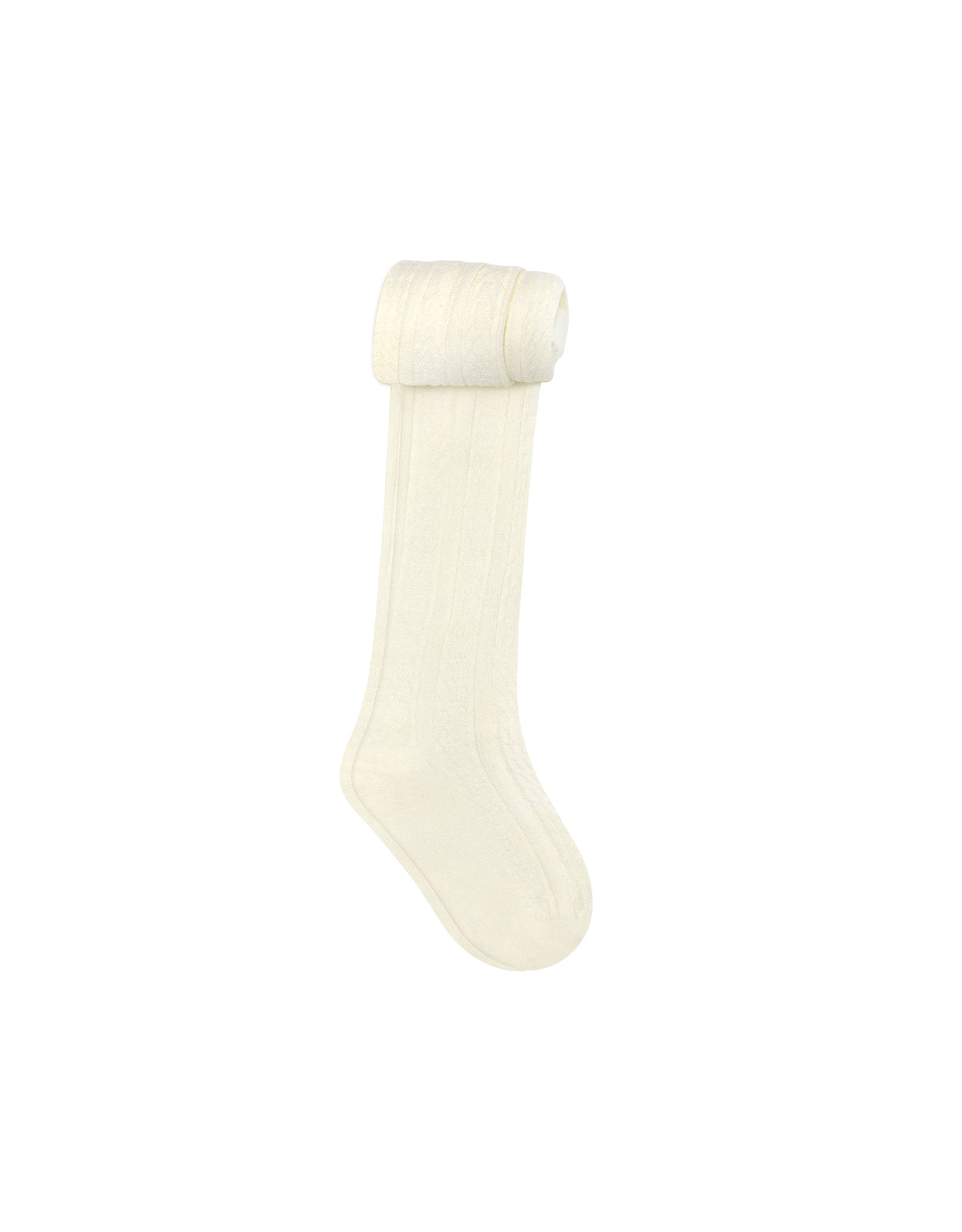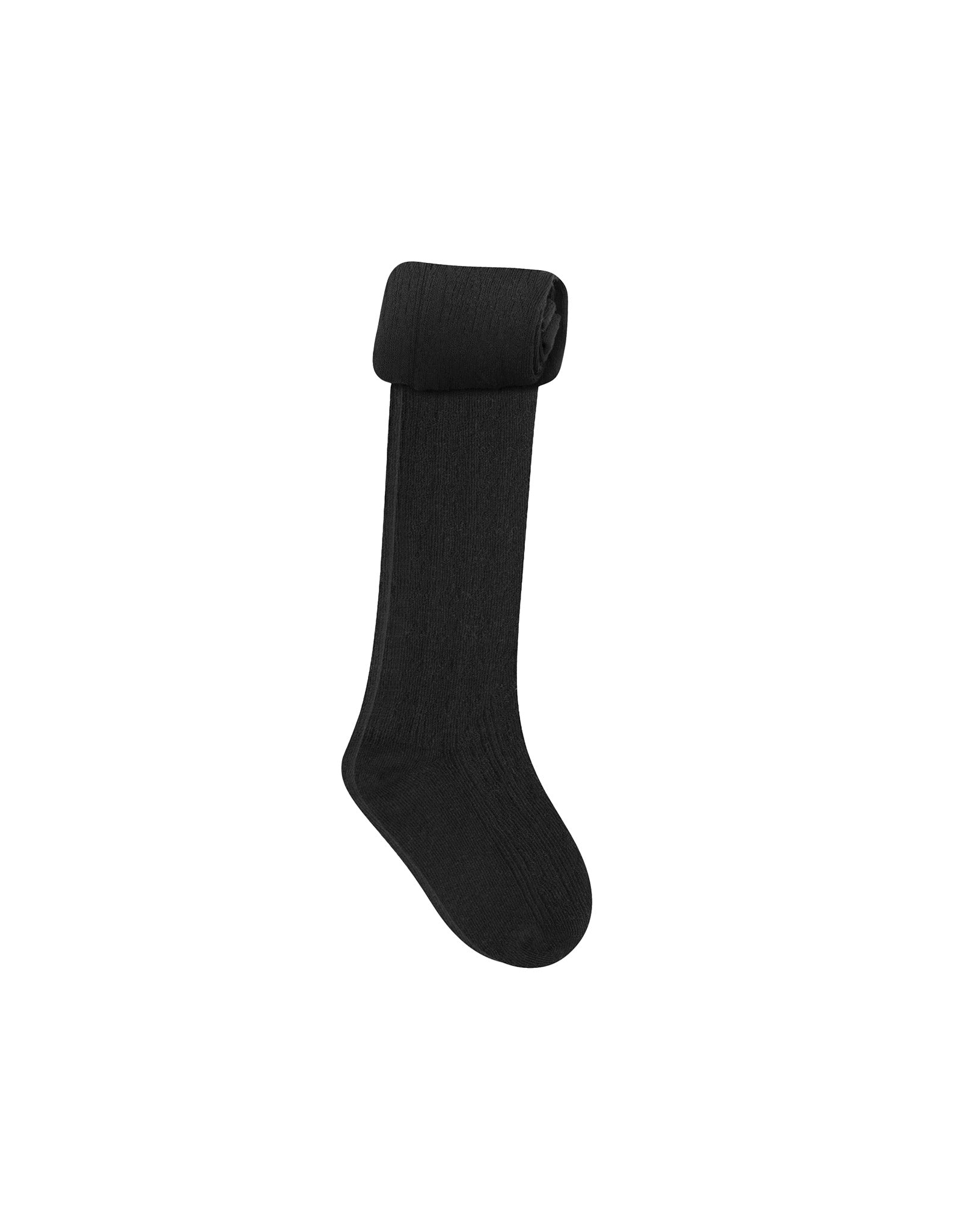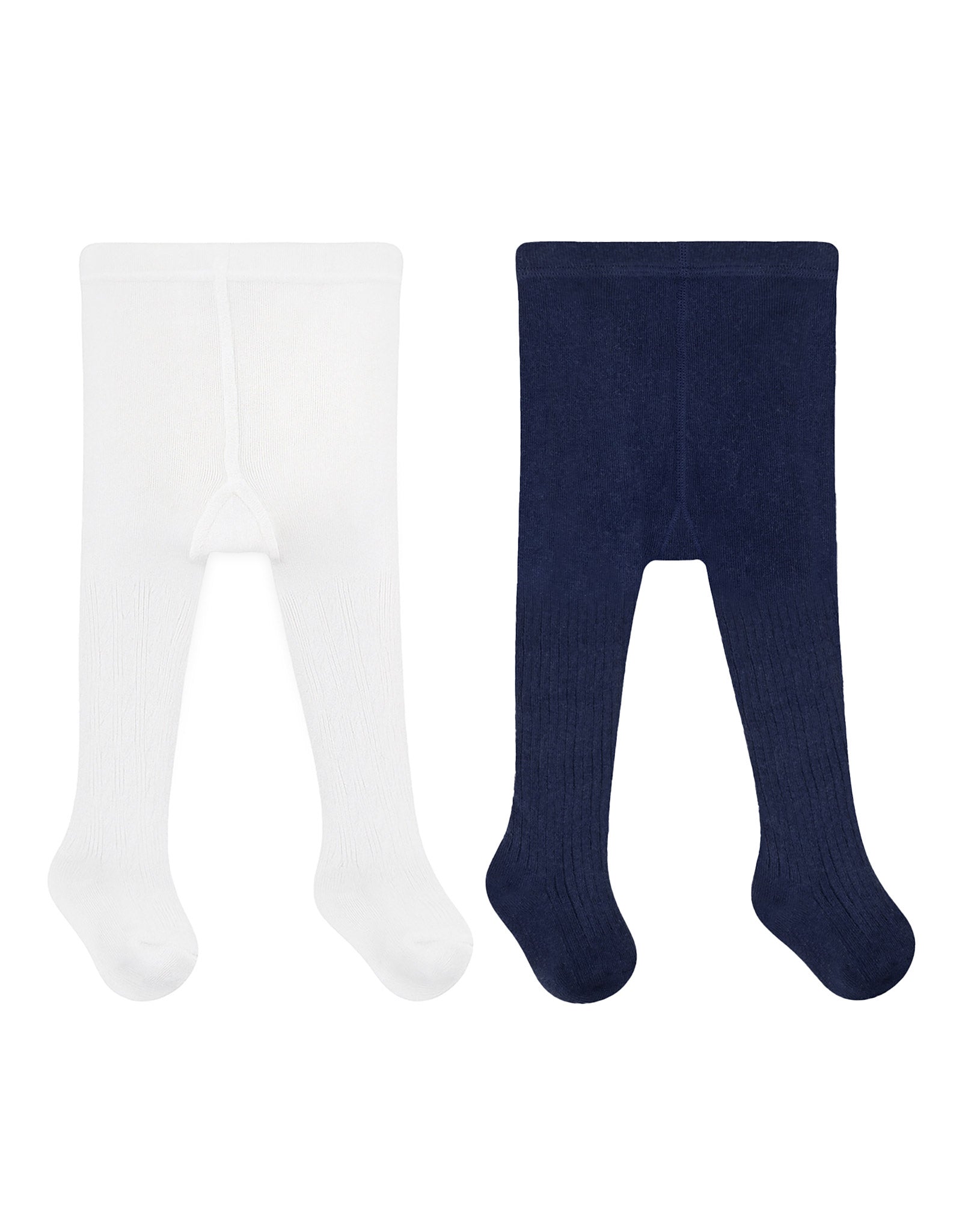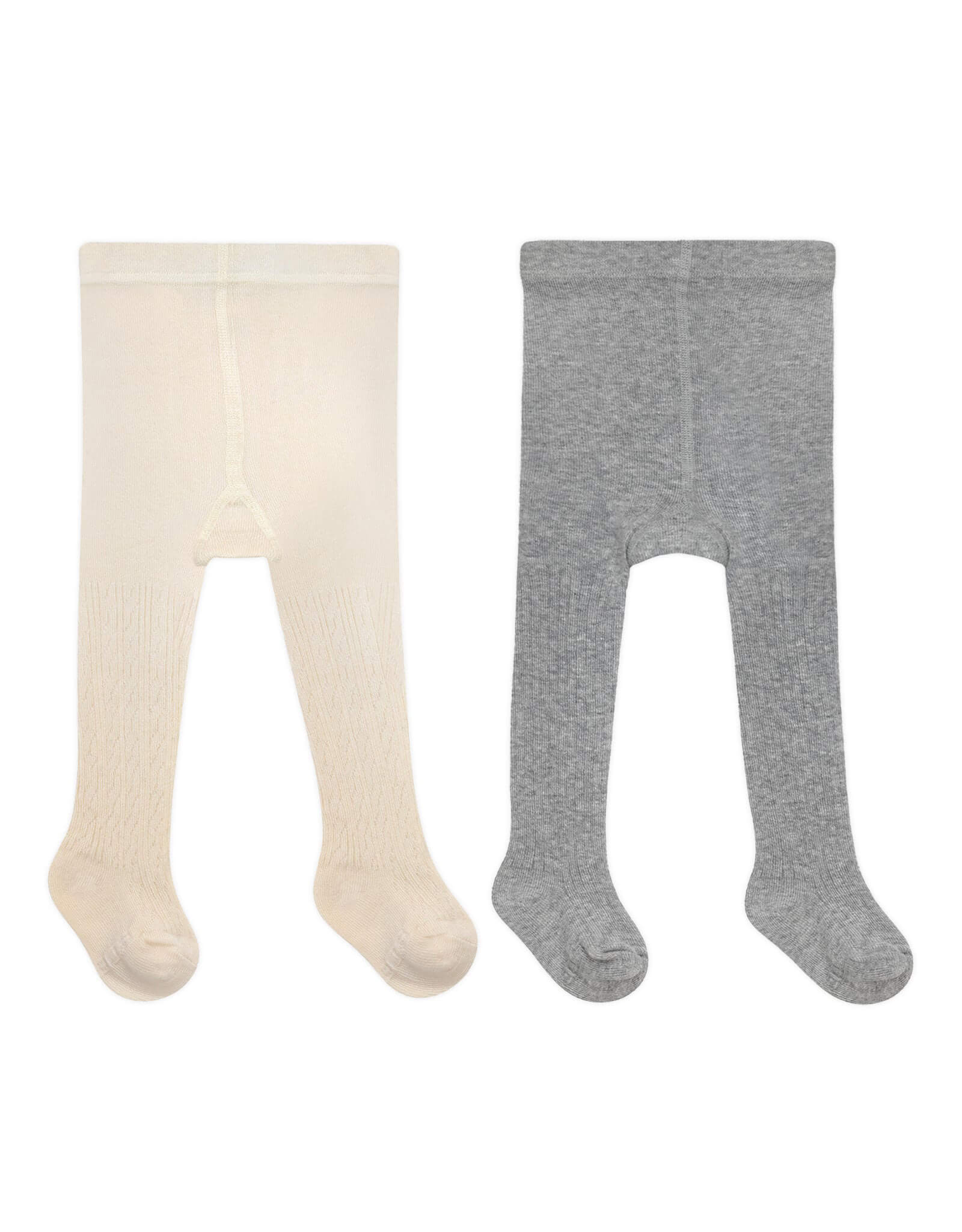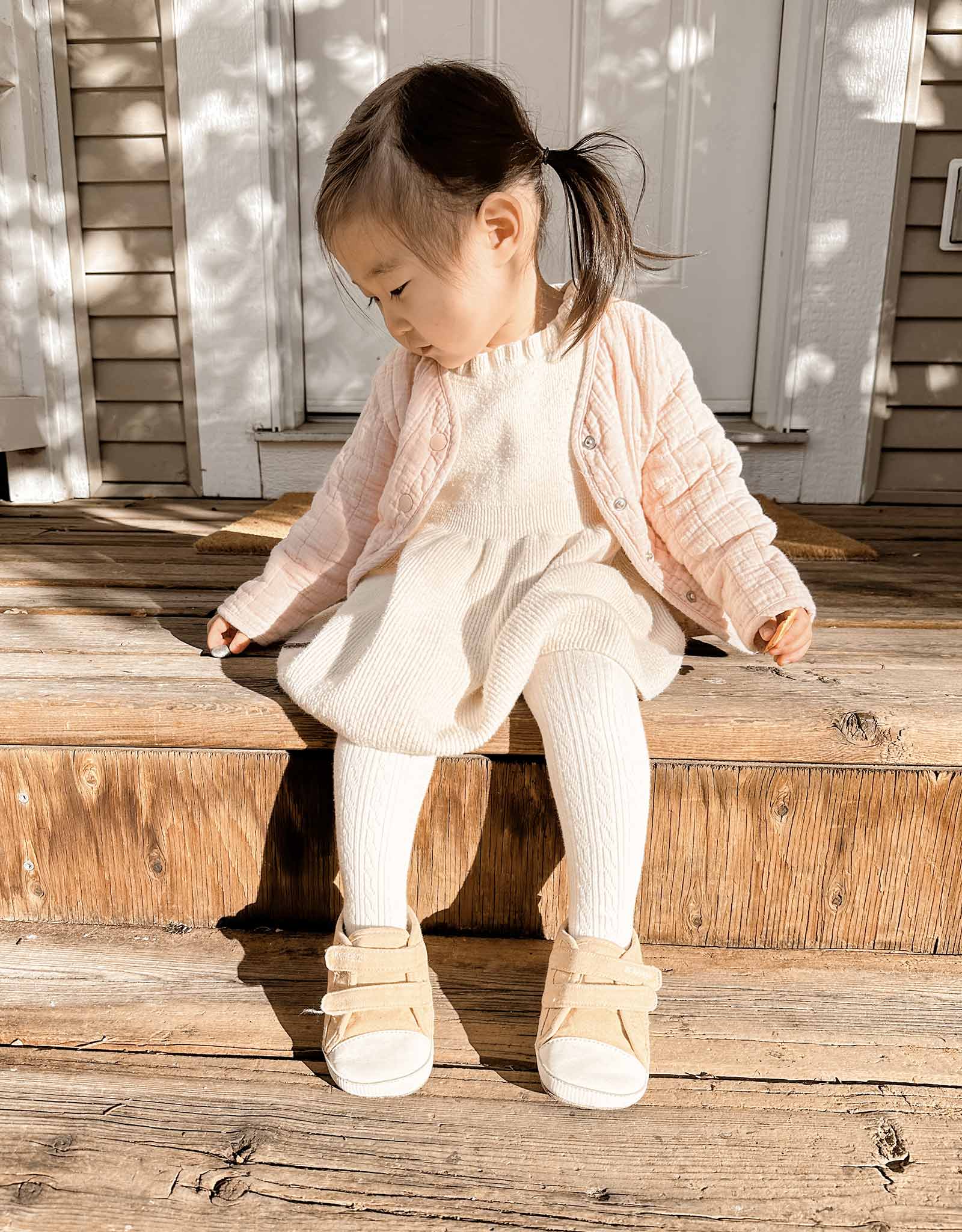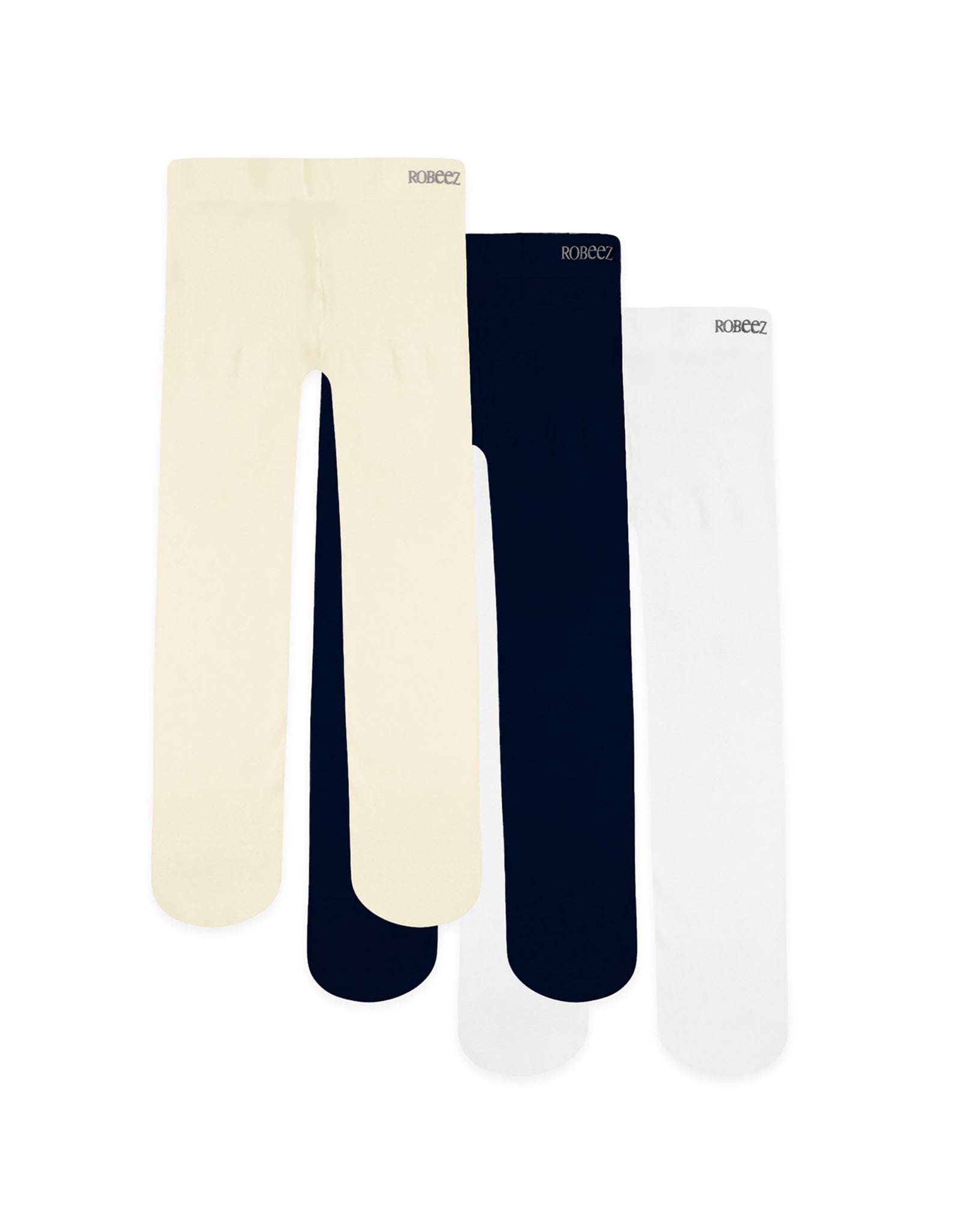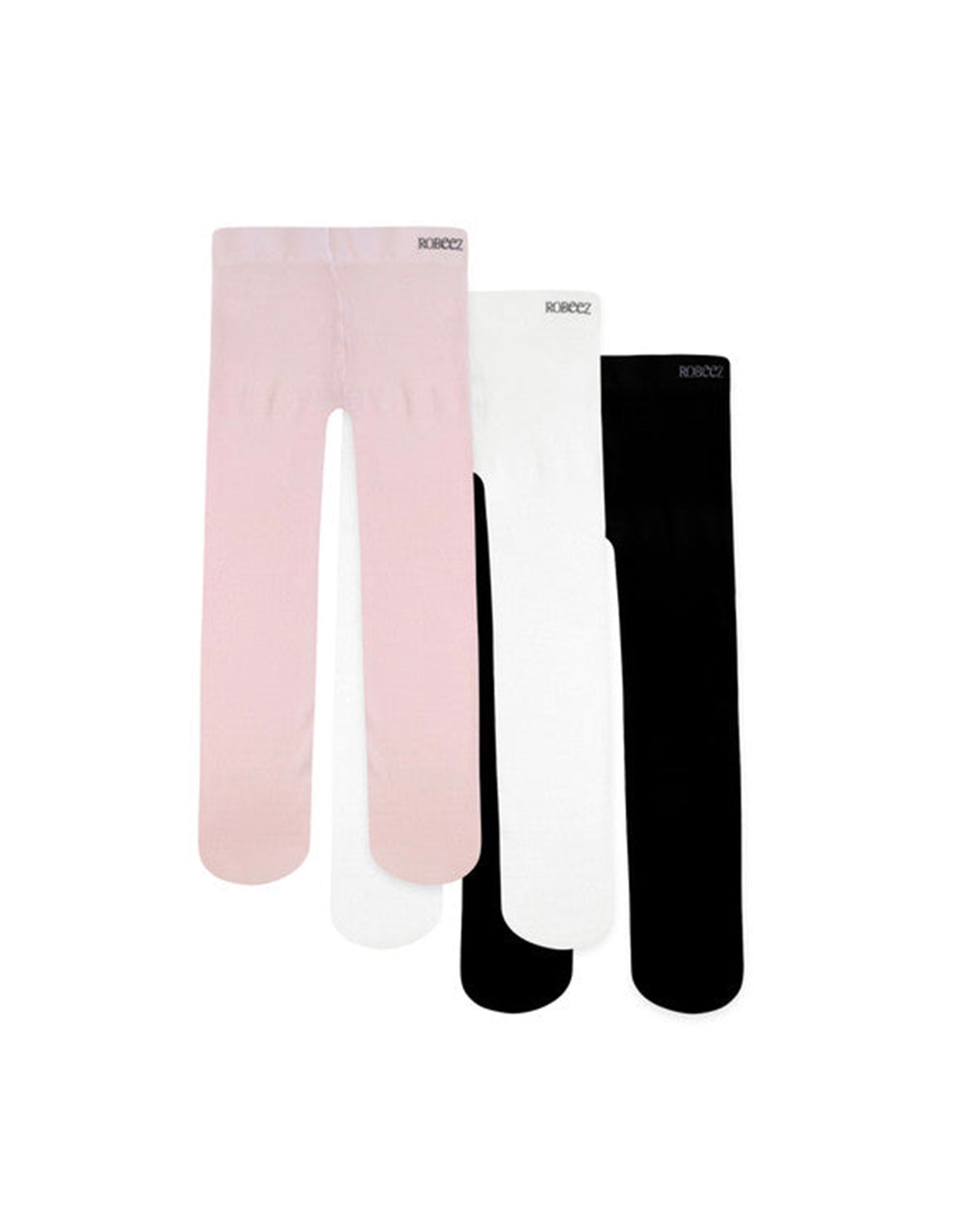Checking for Comfort
Babies and their feet grow quickly, and parents should make sure that their shoes are growing right along with them. Signs that it’s time for a larger size include:
- Your child frequently removes one or both shoes
- Teetering
- Frequent tripping
- Dragging toes
- Red marks and impressions on their feet
Whether you’re noticing some of these signs—or it’s simply been a few months since your child’s last measurement—you can easily test the comfort of their shoes with this baby shoe size chart.
How to Make Sure Baby's Shoe Fit
With your child standing tall, and weight distributed evenly on both feet, start by checking the length of their foot. Use your thumb to measure the space between the child’s longest toe and the tip of their shoe. You’re looking for about half of an inch of space here to ensure their toes have ample space to move around. Repeat this step using your pinky finger this time, and measure the space between your baby’s heel and the back of the shoe.
Now, check that the width of the shoe provides space for comfort and regular foot swelling by grabbing some material at the widest part of their foot. As long as you can grasp some material between your fingers, the shoe width is acceptable.
Sizing Chart
- Soft Soles
- First Kicks
- Snap Booties
- Water Shoes
- Slippers
- Baby Socks
- Kid Socks
- Tights



